Our Location
304 North Cardinal St.
Dorchester Center, MA 02124
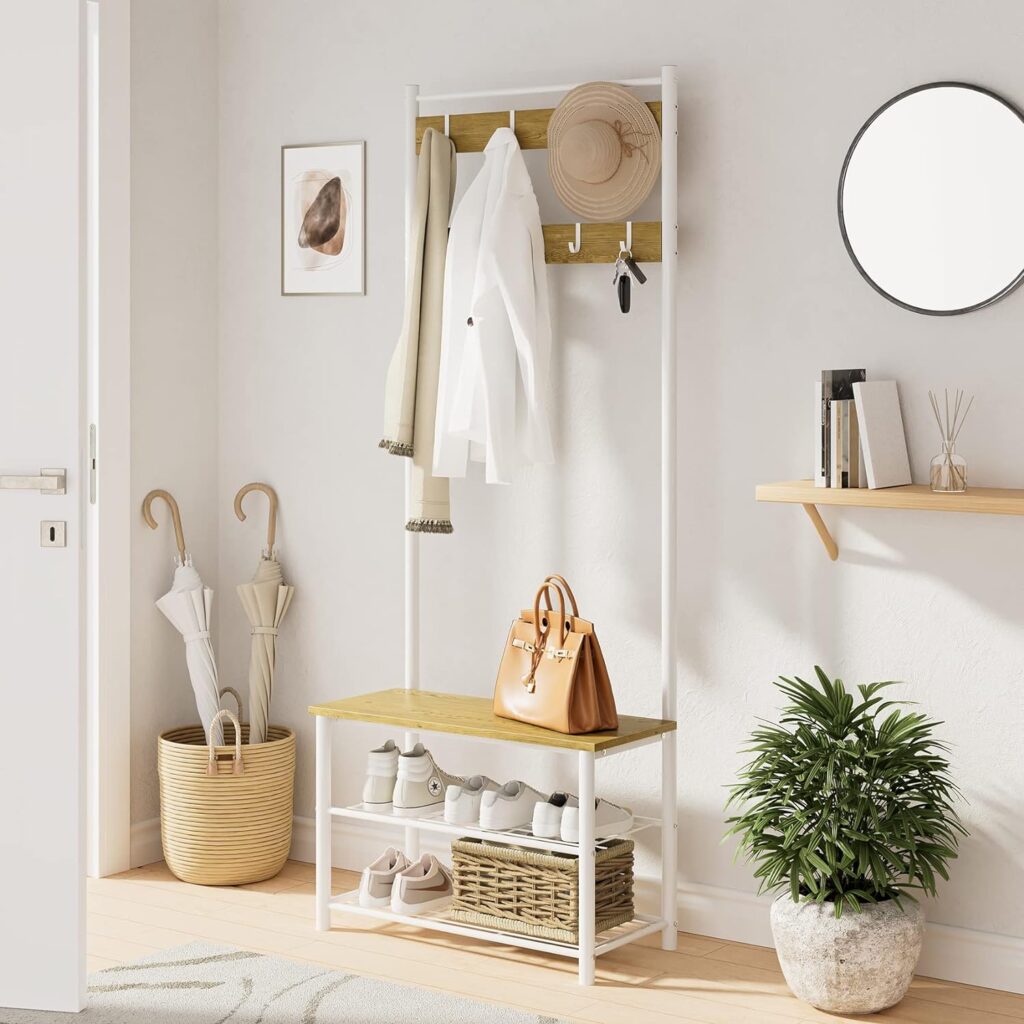
Imagine walking into your home after a long day, greeted not by chaos and clutter, but by an oasis of calm and tranquility. Every item has its place, every corner exudes a sense of order, and the very atmosphere seems to whisper serenity. This isn’t just a dream—it’s the reality that awaits when you unlock the hidden keys to home harmony.
In our modern world, where busyness is glorified and clutter seems to multiply overnight, achieving a harmonious home can feel like an elusive goal. But fear not, for within these pages, we’ll delve deep into the mysteries of organization, revealing the secrets that can transform your space from chaotic to serene.
Thanks for checking out this post! Don't miss out—remember to subscribe!
Embark on a journey of discovery as we uncover the principles that underpin home harmony. From the importance of decluttering to the power of labeling, we’ll explore each key in turn, shedding light on how you can reclaim your space and restore balance to your life.
But the journey doesn’t end there. Along the way, we’ll share practical tips, actionable strategies, and real-life examples to inspire and empower you on your quest for organization. Whether you’re tackling a cluttered closet or reigning in digital chaos, we’ve got you covered with insights that are as practical as they are profound.
So, join us as we unlock the hidden keys to home harmony. Together, we’ll banish clutter, cultivate calm, and create a space that nurtures not just our bodies, but our minds and souls as well. Welcome to a world where harmony reigns supreme—a world that begins right at your doorstep.
In the quest for a clutter-free home, one of the most common pitfalls is overlooking the plethora of storage opportunities that surround us. From the walls to the ceiling, every inch of space holds the potential to become a sanctuary for our belongings, if only we know where to look.
When it comes to storage, many of us fall into the trap of thinking only in terms of horizontal surfaces—shelves, cabinets, and drawers. But what about the vast expanse of vertical space that lies untapped all around us?
Think about it: walls are not just barriers; they’re blank canvases waiting to be transformed into storage masterpieces. By harnessing the power of vertical storage solutions such as shelves, pegboards, and wall-mounted organizers, you can reclaim valuable floor space and banish clutter from your home.
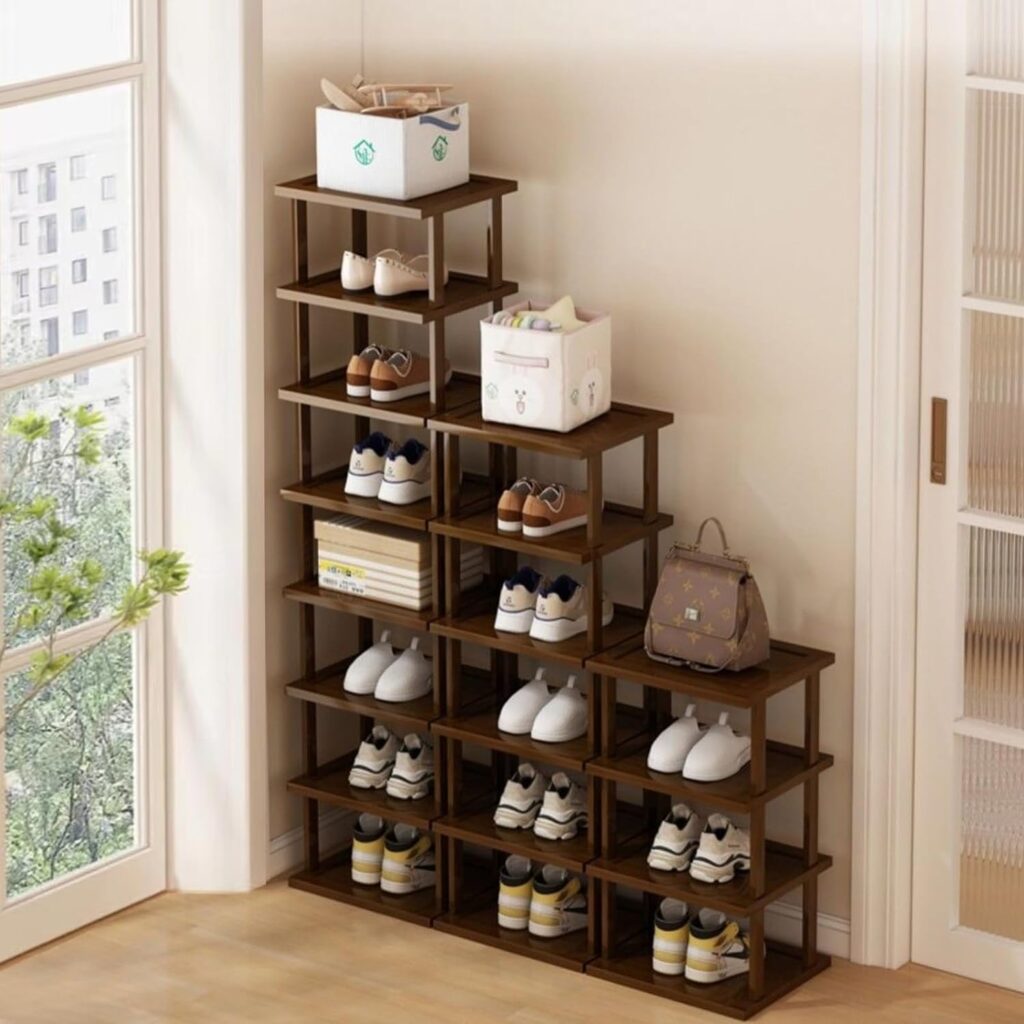
Imagine a kitchen where pots and pans hang gracefully from a ceiling-mounted rack, or a living room where books and knick-knacks are proudly displayed on floor-to-ceiling shelves. With a little creativity and ingenuity, vertical space can become your secret weapon in the battle against clutter.
But vertical storage is just the beginning. What about those oft-neglected nooks and crannies that lurk in the corners of our homes, unnoticed and unused?
Take, for example, the backs of doors—a prime piece of real estate that is all too often left barren. With the simple addition of over-the-door organizers or hooks, you can transform this forgotten space into a treasure trove of storage possibilities. Suddenly, those scarves and handbags have a home of their own, leaving your closets blissfully clutter-free.
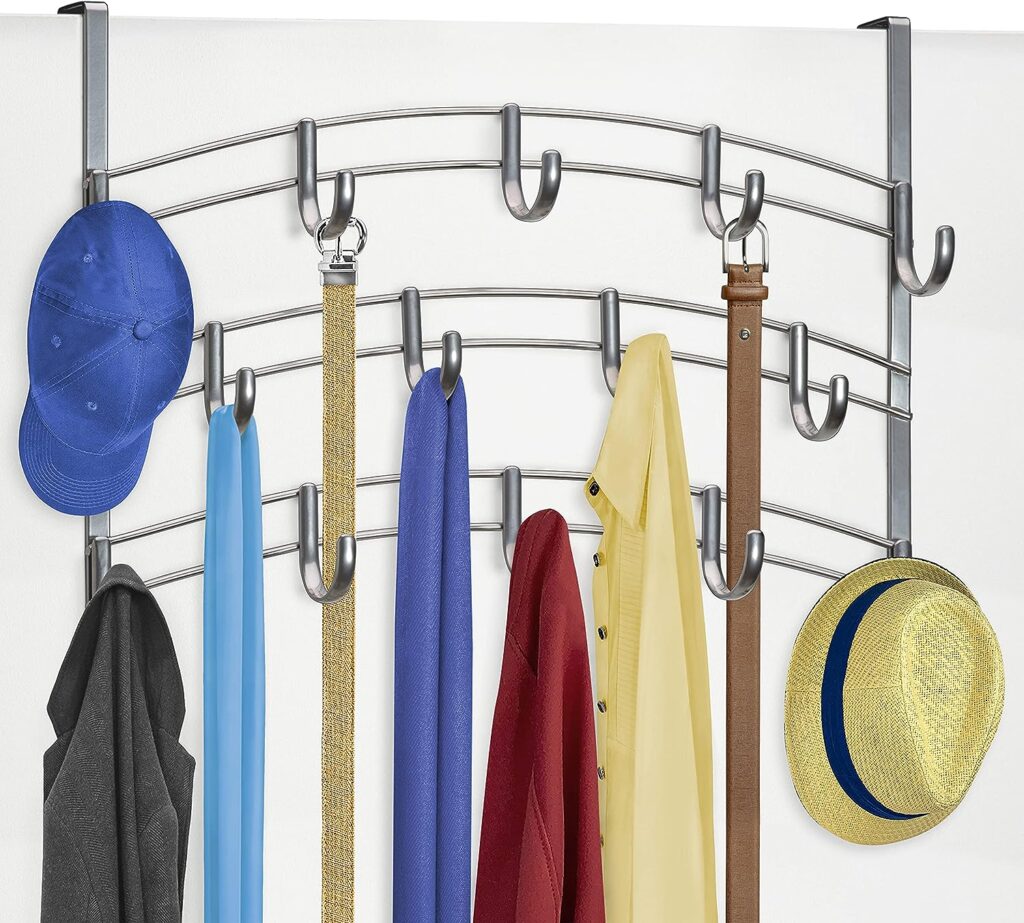
And what about the space under your bed? Instead of letting it become a graveyard for dust bunnies and lost socks, why not invest in a set of under-bed storage bins or drawers? Suddenly, that wasted space becomes a valuable resource for stashing away out-of-season clothing, extra linens, or even bulky sports equipment.
The key is to think outside the box and see potential where others see only empty space. Whether it’s a narrow hallway, an awkward alcove, or a forgotten corner, there are storage opportunities hiding in plain sight, just waiting to be discovered.
So, don’t let clutter reign supreme in your home. Take a fresh look at your surroundings and unleash the full potential of every inch of space. With a little creativity and a keen eye for opportunity, you can transform your home into a haven of organization and order, where clutter is banished and harmony reigns supreme.
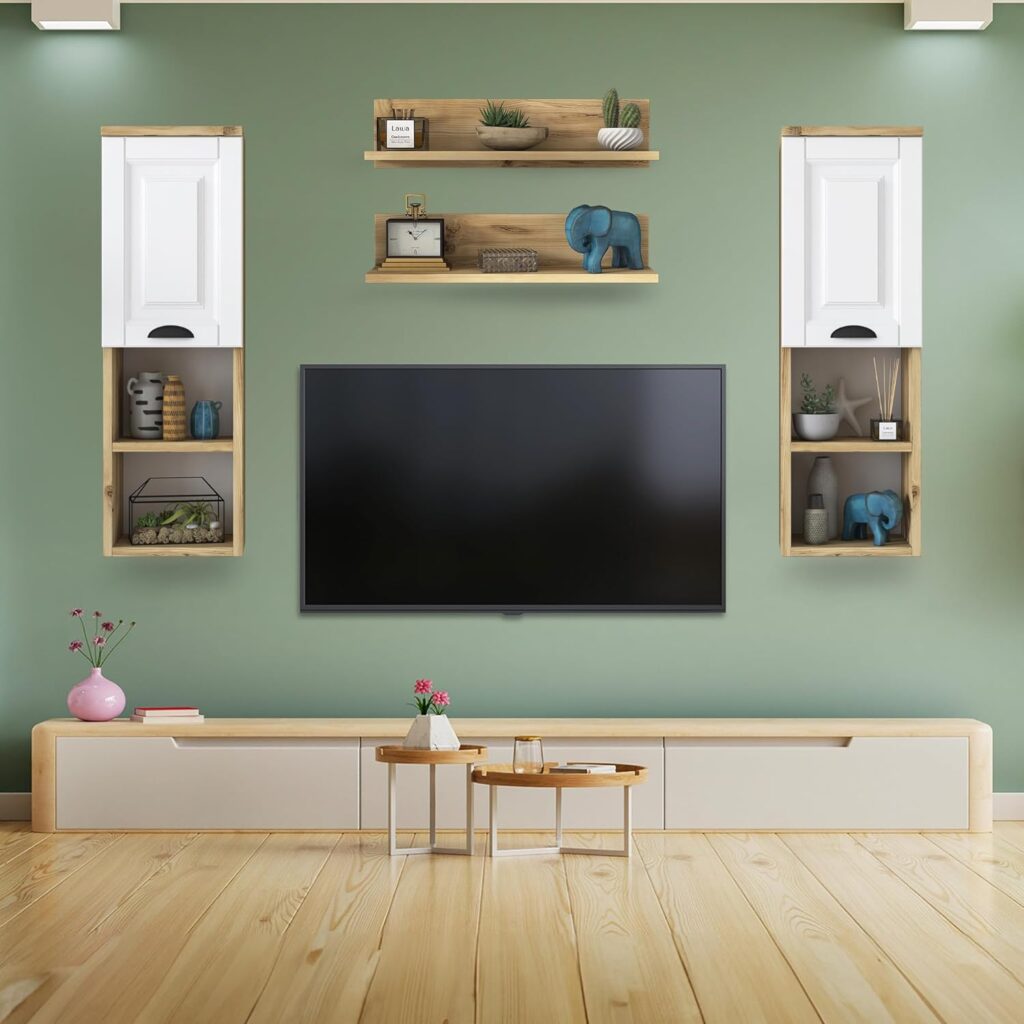
In the battle against clutter, one of the most formidable foes is the lack of a decluttering routine. Without regular maintenance, even the most meticulously organized spaces can quickly succumb to chaos, leaving us feeling overwhelmed and defeated. But fear not, for with the right strategies and mindset, you can break free from clutter’s grip and reclaim control of your home.
Think of decluttering as a form of housekeeping for your belongings—an essential task that requires regular attention and care. Just as you wouldn’t let dust accumulate unchecked or dishes pile up in the sink, you shouldn’t allow clutter to take root and multiply in your home.
Set aside time on a regular basis—whether it’s weekly, monthly, or seasonally—to assess your belongings and weed out the excess. Be ruthless in your approach, asking yourself tough questions about each item’s usefulness and relevance to your life. If it no longer serves a purpose or brings you joy, it’s time to let it go.
By embracing a regular purging routine, you’ll prevent clutter from reaching critical mass and maintain a sense of order and balance in your home. Plus, you’ll free up valuable space for the things that truly matter, making it easier to find and enjoy them when you need them most.
In addition to purging the old, it’s essential to establish systems for managing the influx of new items that enter your home regularly. Without a designated home for incoming items, they’re likely to end up as clutter, adding to the chaos rather than contributing to a sense of order.
Start by designating specific areas for common types of incoming items, such as mail, paperwork, and everyday essentials. Invest in storage solutions like baskets, bins, and trays to corral these items and keep them organized until they can be sorted and dealt with properly.
Additionally, practice the habit of “one in, one out”—for every new item that enters your home, make a commitment to remove a similar item that is no longer needed or used. This simple rule helps to prevent clutter from accumulating and ensures that your belongings remain in balance.
By establishing a decluttering routine and creating homes for incoming items, you’ll break free from clutter’s grip and create a home that is both organized and harmonious. With a little time, effort, and consistency, you’ll enjoy the peace of mind that comes from living in a clutter-free environment.

Your entryway is the gateway to your home—a place where first impressions are made, and daily routines begin. Yet, all too often, this vital space falls victim to clutter and disorganization, leaving you feeling frazzled before you even step foot inside. But fear not, for with a few simple strategies, you can transform your entryway from chaos to calm, setting the tone for a more organized and peaceful home.
The first step in reclaiming your entryway is to tackle the clutter head-on. Start by assessing the current situation – do shoes, coats, and bags pile up haphazardly, creating a tripping hazard and a visual eyesore? Are keys and mail scattered about, making it difficult to find what you need when you need it?
Once you’ve identified the problem areas, it’s time to act. Invest in storage solutions that are both functional and stylish, such as a hall tree with hooks for coats and bags, a shoe rack or bench with cubbies for footwear, and a decorative bowl or tray for keys and other small items. By giving each item a designated home, you’ll prevent clutter from accumulating and make it easier to maintain order daily.
Additionally, consider implementing a “one-touch” rule for incoming items—rather than dropping things wherever you happen to be standing when you walk in the door, make a habit of putting them away immediately in their designated spot. This simple change can go a long way toward keeping clutter at bay and maintaining a sense of calm in your entryway.
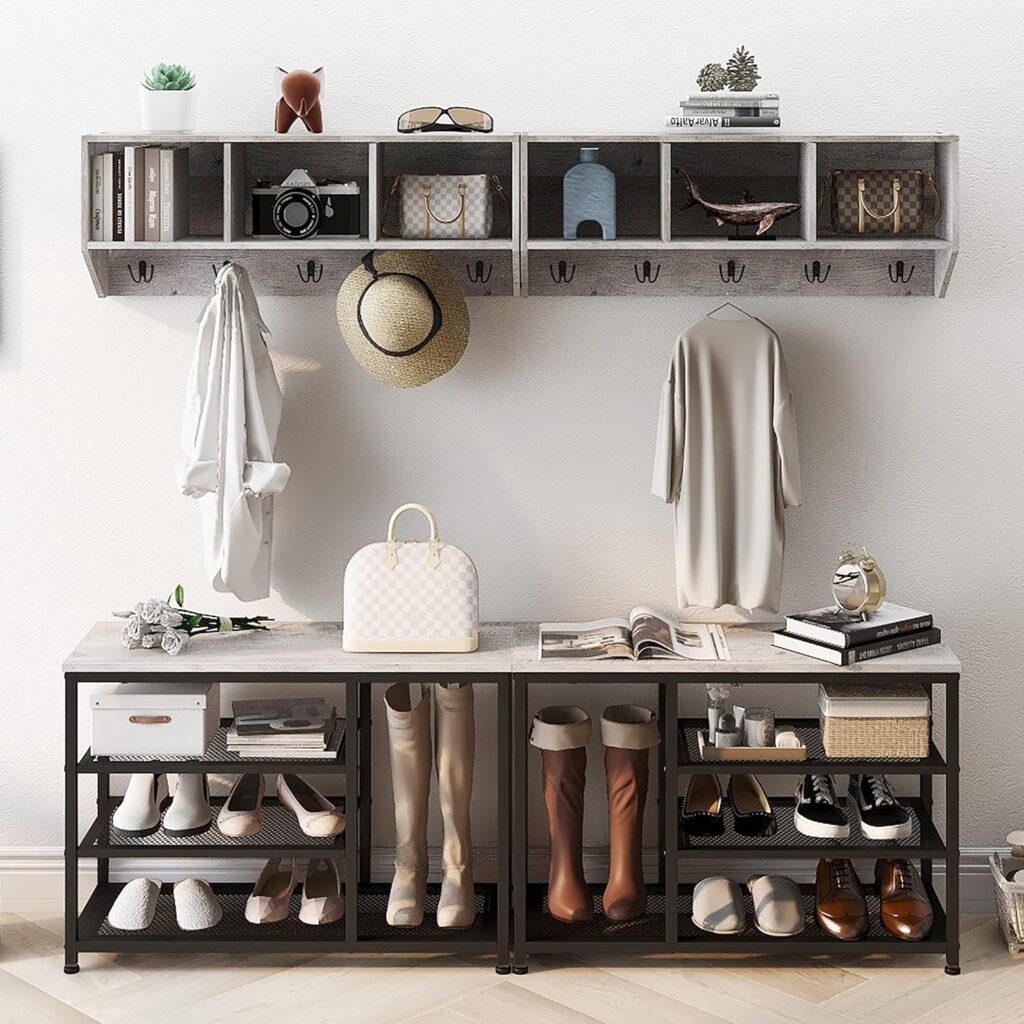
In addition to tackling physical clutter, it’s important to address the influx of mail and other daily essentials that can quickly overwhelm your entryway if left unchecked. Set up a designated area for incoming mail, such as a wall-mounted organizer or a decorative basket on a console table and make a habit of sorting through it regularly to prevent it from piling up.
Consider implementing a system for managing keys as well, such as a key rack or hook near the door. This not only helps to prevent lost keys but also ensures that you always know where to find them when you’re ready to head out the door.
Finally, don’t forget to add a personal touch to your entryway to make it feel warm and welcoming. Whether it’s a colorful rug, a piece of artwork, or a vase of fresh flowers, adding a few decorative elements can help to elevate the space and make it feel more inviting.
By taking a proactive approach to entryway organization and implementing practical solutions for managing clutter and daily essentials, you can transform this often-overlooked space into a tranquil oasis that sets the tone for the rest of your home. Say goodbye to entryway chaos and hello to a more organized and peaceful way of life.
Stay Awhile Sign Wall Decor 40″X15″ Large Solid Wood Frame For Living Room Entryway Farmhouse Wall Art Lets Stay Home Rustic Hanging Decoration (White)
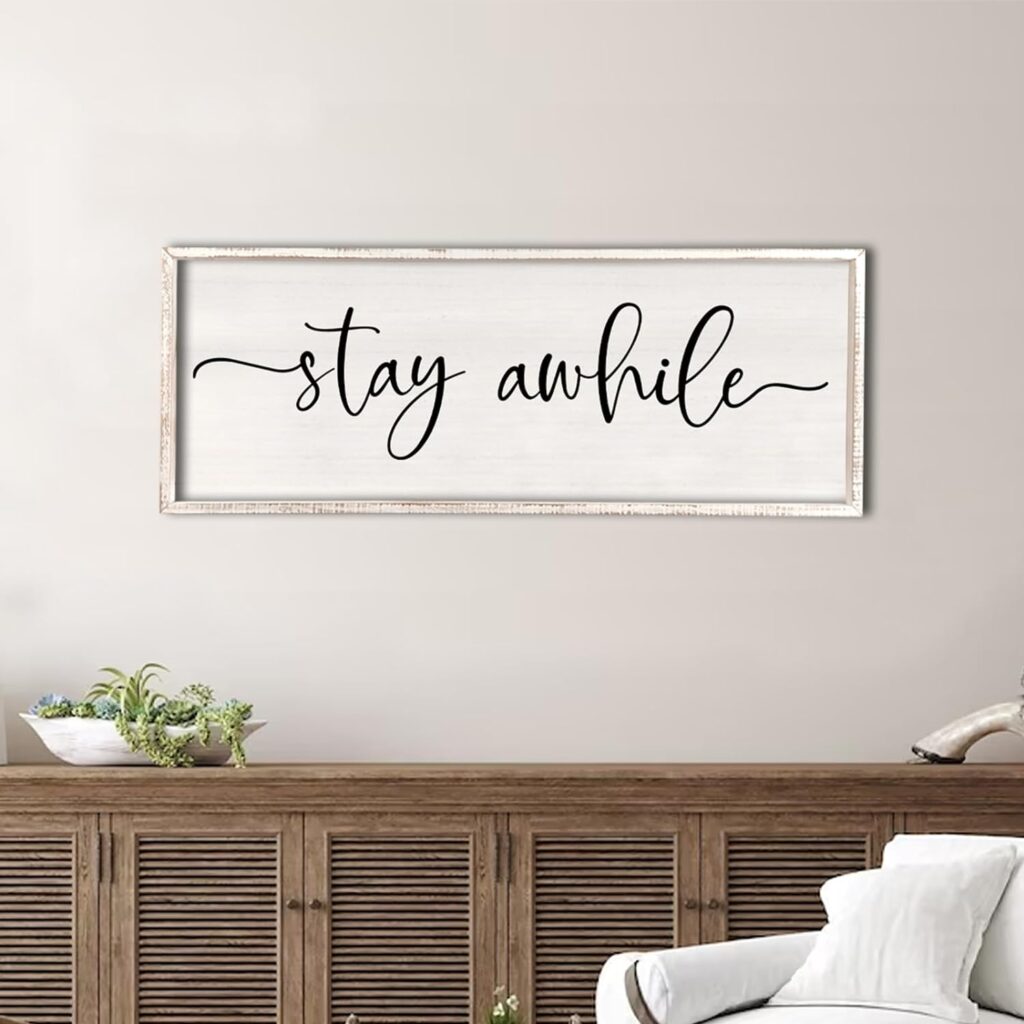
The kitchen is often referred to as the heart of the home—a place where meals are prepared, conversations are had, and memories are made. But when clutter and disorganization reign supreme, this vital space can quickly become more of a headache than a haven. By addressing common kitchen organization pitfalls head-on, you can transform your culinary space into a well-oiled machine that not only looks great but functions seamlessly as well.
One of the biggest culprits of kitchen chaos is cluttered countertops. If your workspace is constantly cluttered with appliances, utensils, and miscellaneous items, it’s time to act. Start by decluttering your countertops, removing items that you don’t use daily and finding alternative storage solutions for those that you do.
Invest in countertop organizers, such as canisters or baskets, to corral frequently used items like cooking utensils, spices, and oils. By keeping these items within arm’s reach but neatly contained, you’ll free up valuable workspace and make meal prep a breeze.
Next, turn your attention to your cabinets and drawers. Are they overstuffed with pots, pans, and dishes, making it difficult to find what you need when you need it? Take a critical look at your kitchenware and pare it down to the essentials, donating or discarding items that are rarely used or in poor condition.
Invest in cabinet organizers, such as stackable shelves, drawer dividers, and pull-out racks, to maximize storage space and keep everything neatly organized. By creating designated homes for each item, you’ll make it easier to find what you need and keep clutter at bay.
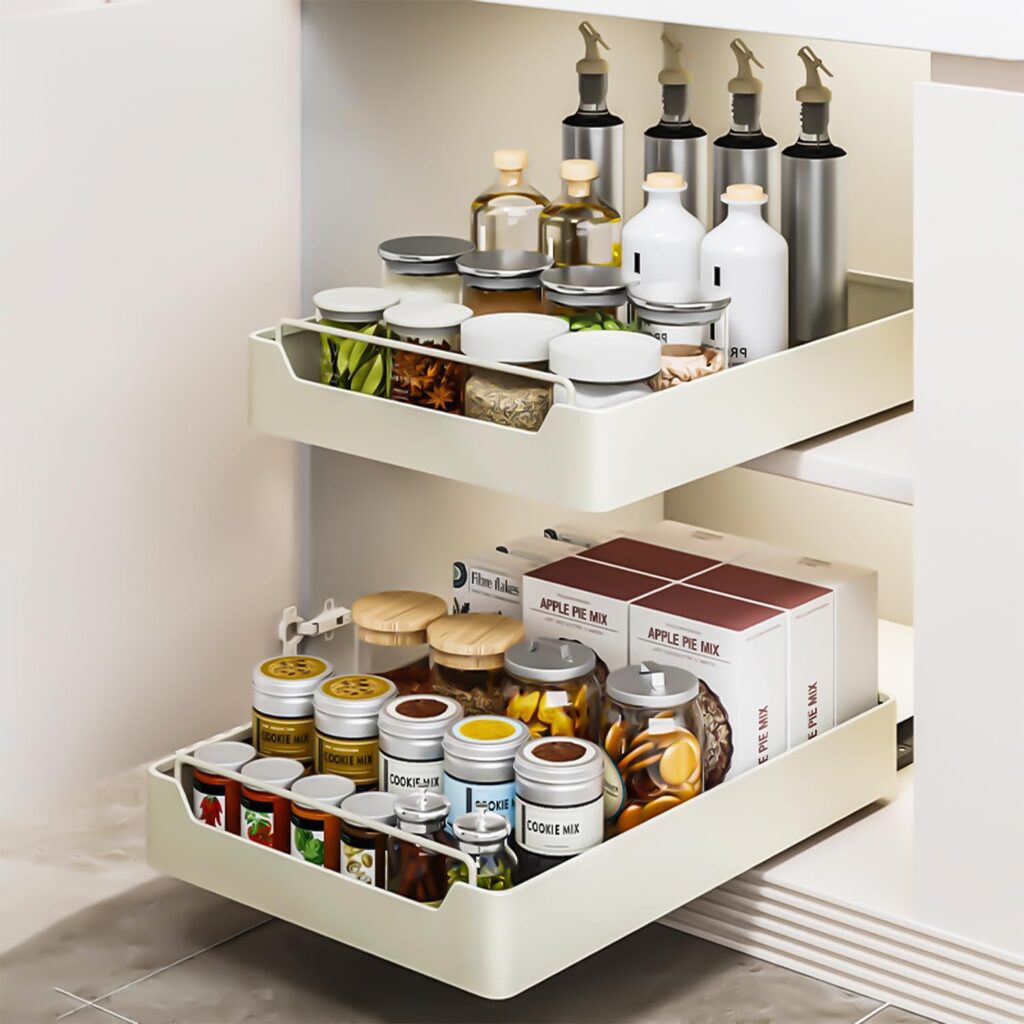
In addition to decluttering your countertops and cabinets, it’s important to take a strategic approach to organizing your kitchen essentials. Group similar items together—for example, store all baking supplies in one area, all cooking oils and spices in another, and all utensils and gadgets in a designated drawer or container.
Labeling can also be a game-changer when it comes to kitchen organization. Invest in a label maker or use chalkboard labels and markers to clearly identify the contents of each container or drawer. Not only will this make it easier to find what you need, but it will also help other family members or housemates to maintain the organization system.
Finally, don’t forget to make use of vertical space in your kitchen. Install hooks or racks on the walls or inside cabinet doors to hang pots, pans, and utensils, freeing up valuable cabinet and drawer space for other items.
By taking a proactive approach to kitchen organization and implementing practical solutions for decluttering and streamlining your space, you can transform your kitchen into a functional and inviting oasis where culinary creativity can flourish. Say goodbye to kitchen chaos and hello to a more organized and enjoyable cooking experience.
XOTAISM Seasoning Containers with Labels – 9 Pcs Big Plastic Spice Storage Containers with 148 Spice Labels and 9 Spoons – Square Stackable Kitchen Small
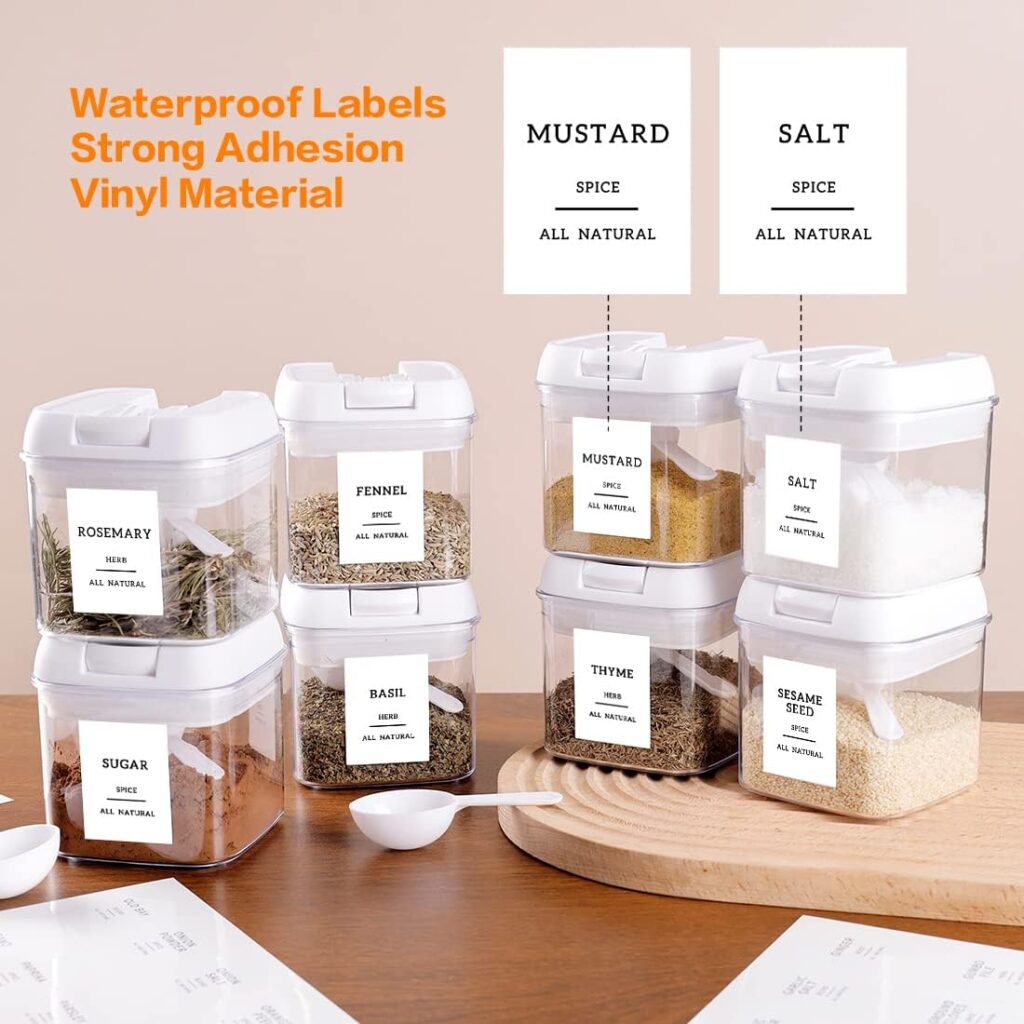
Closets are meant to be havens of organization, where clothing, shoes, and accessories find their designated spots with ease. Yet, all too often, these spaces become breeding grounds for clutter, with items crammed haphazardly onto shelves and overflowing onto the floor. But fear not, for with a little know-how and some strategic planning, you can transform your cluttered closets into streamlined sanctuaries of order and efficiency.
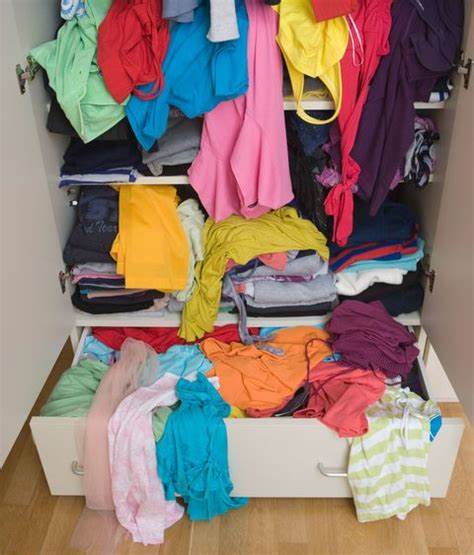
The first step in reclaiming your closet space is to conduct a thorough cleanout. Set aside some dedicated time to go through each item in your closet, asking yourself tough questions about its usefulness, fit, and condition. If you haven’t worn or used an item in the past year, it’s time to let it go.
As you declutter, separate items into piles to keep, donate, or discard. Be ruthless in your decision-making and resist the urge to hold onto items out of sentimentality or the vague hope that you might wear them someday. Remember, every item that you remove from your closet brings you one step closer to a more streamlined and organized space.
Once you’ve purged the excess, take stock of what remains and consider how best to organize it for maximum efficiency and ease of use. Group similar items together—such as tops, bottoms, dresses, and outerwear—and arrange them in a way that makes sense for your daily routine and lifestyle.

With your closet decluttered and your remaining items sorted, it’s time to optimize your storage space with smart solutions. Invest in closet organizers such as shelves, drawers, and hanging rods to maximize vertical space and make the most of every inch of available real estate.
Consider adding storage bins, baskets, or dividers to corral smaller items like accessories, socks, and underwear. These can help to keep items neatly contained and prevent them from getting lost or tangled in the shuffle.
Don’t forget about the often-overlooked areas of your closet, such as the back of the door or the floor space beneath hanging garments. These areas can be prime real estate for additional storage, whether it’s in the form of hooks for bags and scarves or bins for shoes and seasonal items.
Finally, consider investing in a few organizational tools to help keep your closet tidy on a day-to-day basis. From slim-line hangers that save space to over-the-door shoe organizers that maximize vertical storage, these small investments can make a big difference in the overall functionality of your closet.
Whitmor 36 Pair Door Shoe Organizer, White
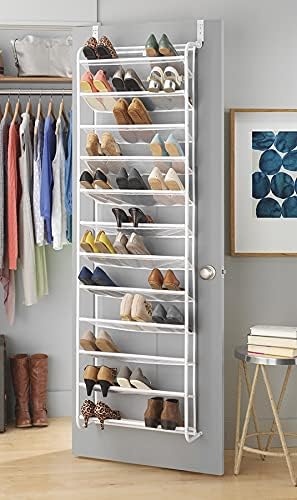
By taking a proactive approach to closet organization and implementing practical solutions for decluttering and storage, you can transform your cluttered closets into streamlined spaces that make getting dressed a breeze. Say goodbye to closet chaos and hello to a more organized and efficient way of living.
In the quest for an organized home, labels are often an afterthought—a small detail that is easily overlooked. However, the truth is that labels wield immense power when it comes to taming clutter and bringing order to chaos. By harnessing the power of labels, you can transform your space from a jumble of belongings into a well-organized sanctuary where everything has its place.
Minimalist Pantry Labels for Food Containers – 180 Food Labels for Organizing Food Storage Labels for Jars Kitchen Labels for Storage Bins – Jar Labels Stickers Pantry Labels for Containers
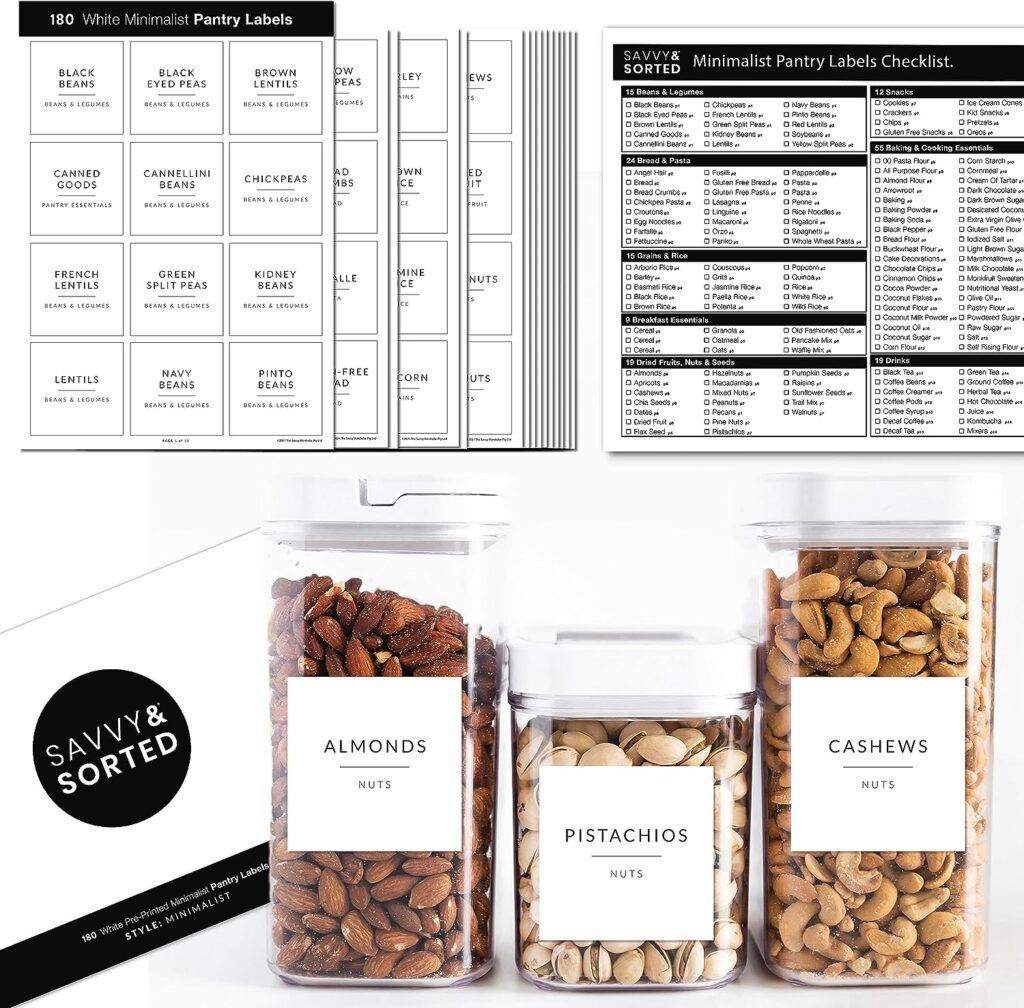
Labels serve as signposts, guiding you effortlessly to the items you need and ensuring that everything returns to its rightful home. Whether it’s a bin of toys in the playroom, a row of spice jars in the kitchen, or a stack of files in the home office, labels provide clarity and structure in a world that can often feel overwhelming.
Invest in a label maker or get creative with chalkboard labels and markers to clearly identify the contents of each container, drawer, or shelf. Be specific with your labeling—instead of simply labeling a bin “toys,” for example, break it down further into categories like “Legos,” “action figures,” and “board games” to make it easier to find what you need.
Consistency is key when it comes to labeling. Choose a labeling system that works for you and stick with it throughout your home. Whether you prefer to use words, symbols, or a combination of both, make sure that your labels are clear, concise, and easy to read.
Consider color-coding your labels to further streamline the organization process. Assign a different color to each category of items—for example, blue for office supplies, green for cleaning products, and red for emergency supplies—and use matching labels to create a cohesive and visually appealing system.
Don’t forget to update your labels as needed to reflect any changes in your organization system. As your needs evolve and your belongings shift, take the time to reassess and adjust your labels accordingly to ensure that they continue to serve their purpose effectively.
By underestimating the power of labels, you’re missing out on a simple yet effective tool for bringing order to chaos in your home. Embrace the labeling revolution and watch as your space transforms into a well-organized oasis where clutter is banished and harmony reigns supreme.
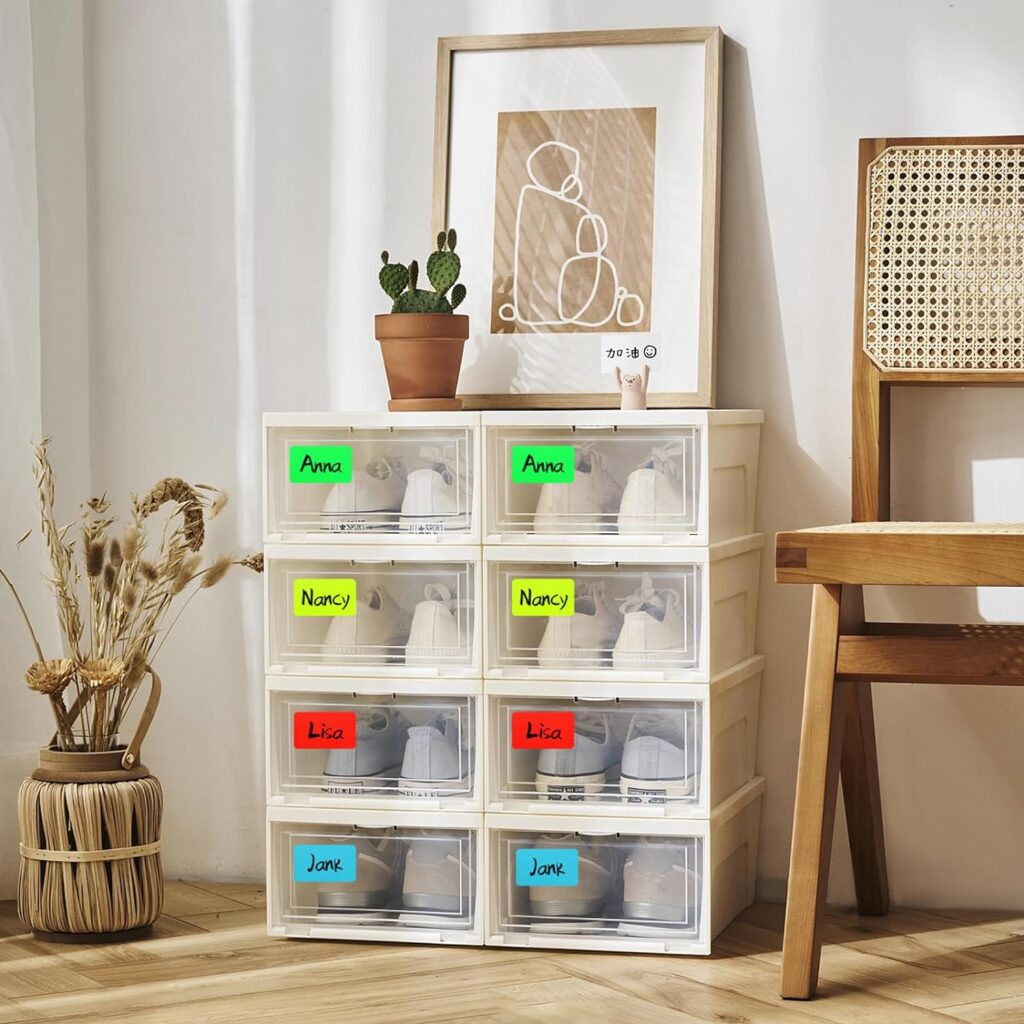
Paper clutter is a common nemesis in many households, lurking in drawers, stacking up on countertops, and threatening to engulf entire rooms in an avalanche of bills, receipts, and miscellaneous documents. But fear not, for with a few simple strategies and a healthy dose of determination, you can conquer the paper-clutter beast and reclaim control of your space once and for all.

The first step in conquering paper clutter is to tackle it head-on. Set aside dedicated time to go through each pile of paper in your home, sorting it into categories such as bills, receipts, important documents, and junk mail. Be ruthless in your approach—ask yourself whether each item is truly necessary and whether it serves a purpose in your life. If not, it’s time to let it go.
Invest in a filing system to help you keep track of important documents and paperwork. Whether you prefer a traditional filing cabinet, a set of accordion files, or a digital filing system, make sure that it’s organized in a way that makes sense to you and that you can easily access when needed.
As you sort through your paperwork, make sure to shred or recycle any documents that contain sensitive information or that you no longer need. This will not only help to declutter your space but also protect your personal information from falling into the wrong hands.

Once you’ve sorted through your paper clutter, it’s time to implement an effective filing system to keep it from piling up again in the future. Start by creating broad categories for your files, such as finances, medical records, and household documents, and then further divide them into subcategories as needed.
Label each file clearly and consistently to make it easy to find what you need when you need it. Consider color-coding your files to further streamline the organization process—for example, using red for financial documents, blue for medical records, and green for household paperwork.
Make it a habit to file paperwork as soon as it enters your home, rather than letting it pile up on countertops or in drawers. Designate a specific area for incoming mail and paperwork, such as a tray or basket, and make a commitment to sort through it regularly to prevent clutter from accumulating.
By tackling paper clutter head-on and implementing an effective filing system, you can banish paper avalanches for good and reclaim control of your space. Say goodbye to cluttered countertops and overstuffed drawers and hello to a home that is organized, efficient, and clutter-free.

In today’s digital age, the clutter that threatens to overwhelm us isn’t just physical—it’s digital too. From overflowing email inboxes to cluttered desktops and disorganized digital files, the digital clutter monster can quickly spiral out of control if left unchecked. But fear not, for with a few simple strategies and a bit of digital discipline, you can untangle the web of digital clutter and reclaim control of your digital domain.
The first step in conquering digital clutter is to take stock of your digital landscape and identify areas of clutter. Start by tackling your email inbox, unsubscribing from unnecessary mailing lists, and deleting old emails and spam. Set up filters and folders to organize incoming emails automatically and make it easier to find what you need when you need it.
Next, turn your attention to your computer desktop and digital files. Are they overflowing with documents, photos, and downloads, making it difficult to find anything? Take the time to declutter your desktop by organizing files into folders and deleting or archiving anything that you no longer need.
Invest in cloud storage solutions like Google Drive, Dropbox, or iCloud to store and organize your digital files securely. These platforms offer ample storage space and robust organization features, making it easy to access and manage your files from anywhere, on any device.
Declutter Your Digital Domain

Once you’ve decluttered your digital space, it’s time to implement an effective organization system to keep it tidy moving forward. Create a logical folder structure for your digital files, organizing them by category, project, or date. Be consistent with your naming conventions and file naming conventions to make it easier to find what you need when you need it.
Consider using tags or keywords to further categorize and organize your digital files. Tags allow you to assign multiple categories to a single file, making it easier to find relevant files later. For example, you might tag a document as “work,” “project,” and “2024” to indicate that it pertains to a specific project at work in the year 2024.
Make it a habit to regularly review and organize your digital files, deleting anything that is no longer needed and reorganizing files as necessary. Set aside dedicated time each week or month to tidy up your digital space and prevent clutter from accumulating.
By taking a proactive approach to digital organization and implementing practical strategies for decluttering and organizing your digital space, you can tame the digital clutter monster and reclaim control of your digital domain. Say goodbye to overflowing inboxes and cluttered desktops and hello to a digital space that is organized, efficient, and clutter-free.
Digital Organisation

The bathroom, often considered one of the most intimate and personal spaces in the home, can easily become a hotbed of disorganization and clutter. From overflowing toiletries to jumbled towels, a disorganized bathroom not only detracts from its functionality but can also diminish the sense of tranquility and relaxation that should accompany this sanctuary. But fret not, for with a strategic approach and a touch of creativity, you can transform your bathroom into an oasis of calm and order.
Disorganized Spaces
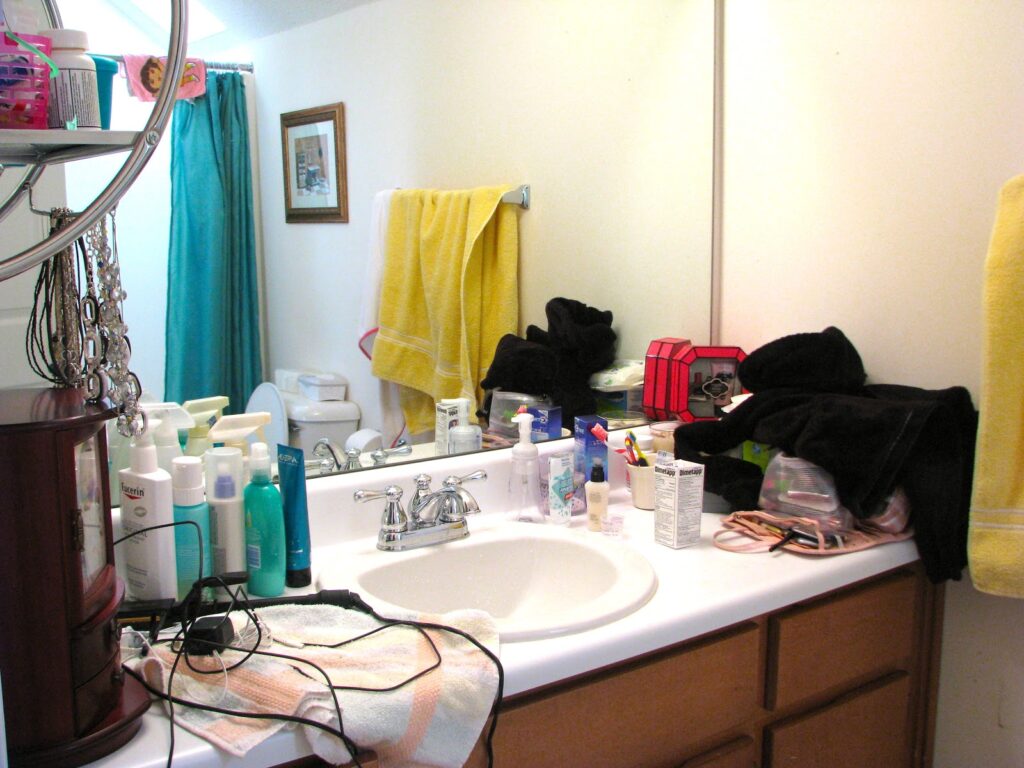
The first step in reclaiming your bathroom space is to declutter with purpose and precision. Begin by emptying out cabinets, drawers, and shelves, and sorting through your toiletries, cosmetics, and grooming products. Discard expired or unused items and donate duplicates or items that no longer serve you.
Invest in bathroom storage solutions that maximize vertical space, such as over-toilet shelving units, wall-mounted cabinets, or floating shelves. Utilize baskets, bins, or drawer dividers to corral smaller items like makeup brushes, hair accessories, and toiletries, keeping them neatly organized and easily accessible.
Consider streamlining your bathroom essentials by opting for multi-purpose products or decanting liquids into labeled pump bottles or jars. Not only does this reduce visual clutter, but it also adds a touch of elegance to your bathroom decor.
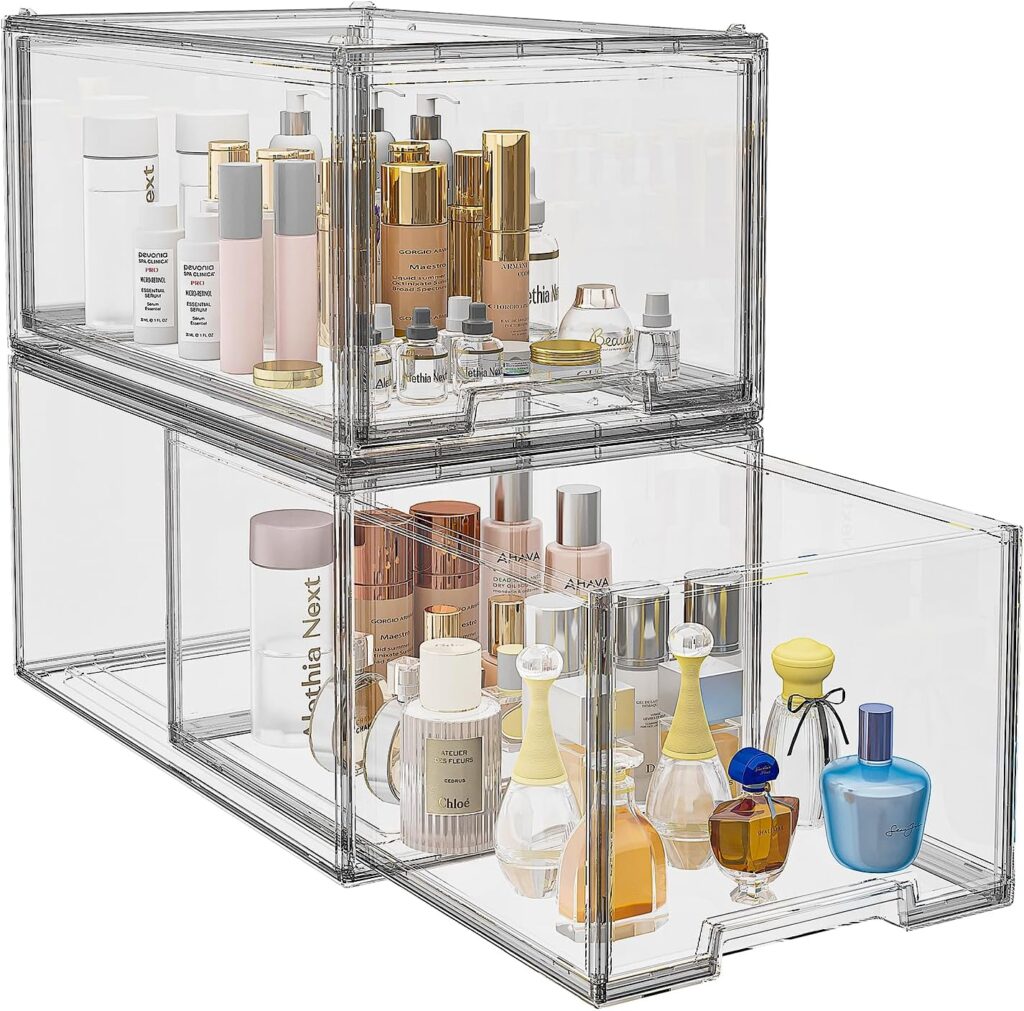
Once you’ve cleared the clutter, it’s time to establish systems for maintaining order in your bathroom essentials. Designate specific areas for towels, toiletries, and cleaning supplies, and make sure that each item has a designated home.
Invest in towel racks or hooks to hang towels neatly, ensuring that they dry properly and stay fresh between uses. Roll towels instead of folding them to save space and create a spa-like aesthetic.
Create a daily maintenance routine for your bathroom, such as wiping down surfaces, refilling soap dispensers, and tidying up after use. Encourage household members to pitch in and keep the space clean and organized, making it a shared responsibility.
Consider incorporating decorative elements like plants, candles, or artwork to enhance the ambiance of your bathroom and create a sense of serenity and tranquility. By infusing your space with elements that bring you joy and relaxation, you’ll transform your bathroom into a true oasis of calm and order.
With a thoughtful approach to organization and a commitment to maintaining order, you can banish bathroom clutter and create a space that is both functional and inviting. Say goodbye to chaos and hello to a bathroom that exudes tranquility and serenity—a space where you can unwind, refresh, and rejuvenate in peace.

It’s a scenario many of us are familiar with holding onto possessions we no longer need or want, not out of necessity or love, but out of a sense of guilt. Whether it’s a gift from a well-meaning friend, an heirloom passed down through generations, or an item we spent hard-earned money on but never use, the burden of guilt can weigh heavily on our shoulders, trapping us in a cycle of clutter and discontent. But it doesn’t have to be this way. By confronting our feelings of guilt head-on and adopting a more mindful approach to decluttering, we can liberate ourselves from emotional clutter and create space for the things that truly bring us joy.
The first step in breaking free from the grip of guilt is to acknowledge and confront our emotions head-on. Take a moment to reflect on why you’re holding onto certain items—is it out of obligation, fear of regret, or a sense of attachment to the past? By understanding the root cause of your guilt, you can begin to untangle the emotional knots that keep you tethered to clutter.
Practice self-compassion and forgiveness as you navigate the process of decluttering. Remind yourself that it’s okay to let go of things that no longer serve you, and that doing so is an act of self-care, not selfishness. Release yourself from the burden of guilt and embrace the freedom that comes from simplifying your life and surroundings.
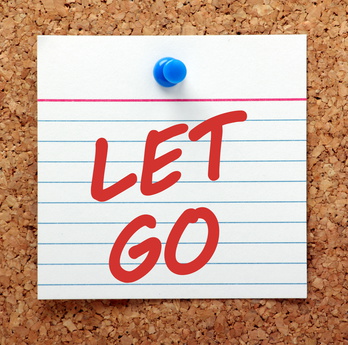
As you declutter, focus on creating space for the things that truly bring you joy and fulfillment. Surround yourself with items that uplift and inspire you and let go of anything that weighs you down or holds you back. Trust your intuition and listen to your heart as you decide what to keep and what to release.
Practice gratitude for the abundance in your life and let go of scarcity mentality that tells you, you need to hold onto everything just in case. Trust that the universe will provide what you need when you need it, and that by releasing what no longer serves you, you’re making room for new opportunities and blessings to flow into your life.
By letting go of unwanted items out of guilt and embracing a more mindful approach to decluttering, you can create space for joy, abundance, and fulfillment in your life. Say goodbye to the burden of emotional clutter and hello to a lighter, freer way of living—a life where every possession brings you joy and every space in your home is a sanctuary of peace and serenity.

It’s a familiar scenario: you spend hours decluttering and organizing your home, reveling in the newfound sense of order and tranquility. But as days turn into weeks and weeks into months, the chaos begins to creep back in, slowly but surely undoing all your hard work. The culprit? Ignoring maintenance routines. Without regular upkeep and care, even the most meticulously organized spaces can quickly fall into disarray. But fear not, for with a commitment to consistency and a few simple maintenance habits, you can sustain order and keep clutter at bay for the long haul.
Just as regular exercise is essential for maintaining physical health, scheduled decluttering sessions are crucial for sustaining order in your home. Set aside dedicated time each week or month to assess your surroundings, identify areas of clutter, and tackle them head-on. Whether it’s a quick tidy-up of high-traffic areas or a deep dive into problem areas like closets or storage spaces, consistency is key.
During these decluttering sessions, be proactive in addressing clutter as it arises rather than letting it accumulate unchecked. Put items back in their designated homes, discard or donate items you no longer need, and make note of any areas that require further attention or organization. By staying on top of clutter and addressing it promptly, you’ll prevent it from spiraling out of control and maintain a sense of order in your home.

In addition to scheduled decluttering sessions, it’s important to incorporate daily tidying habits into your routine to prevent clutter from building up in the first place. Set aside a few minutes each day to tidy up high-traffic areas like the kitchen, living room, and entryway, putting away items that have been left out and restoring order to your surroundings.
Encourage household members to pitch in and help with daily tidying tasks, making it a shared responsibility rather than falling solely on one person’s shoulders. Consider implementing a “five-minute tidy-up” rule, where everyone spends a few minutes, each evening tidying up common areas before winding down for the night. By making tidying up a regular part of your daily routine, you’ll prevent clutter from taking hold and maintain a sense of order and calm in your home.
By embracing scheduled decluttering sessions and incorporating daily tidying habits into your routine, you can sustain order in your home and keep clutter at bay for the long term. Say goodbye to chaos and hello to a space that is consistently clean, organized, and clutter-free – a space where you can relax, recharge, and enjoy the peace and tranquility of a well-maintained home.
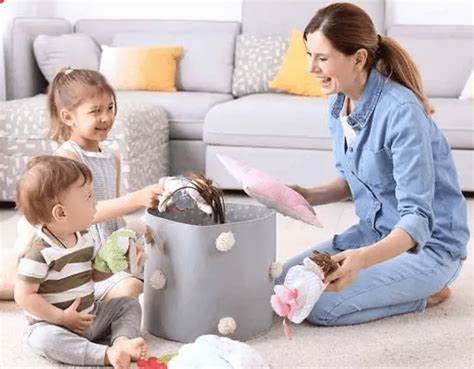
Collections, whether it’s books, movies, or figurines, can bring joy and personality to your space. However, when left unchecked, collections can quickly become overwhelming and contribute to clutter. The key to maintaining a harmonious home lies in streamlining your collections – carefully curating and organizing them to showcase their beauty and significance without overwhelming your space. By adopting a strategic approach to collection management, you can transform your treasures into focal points of beauty and inspiration.
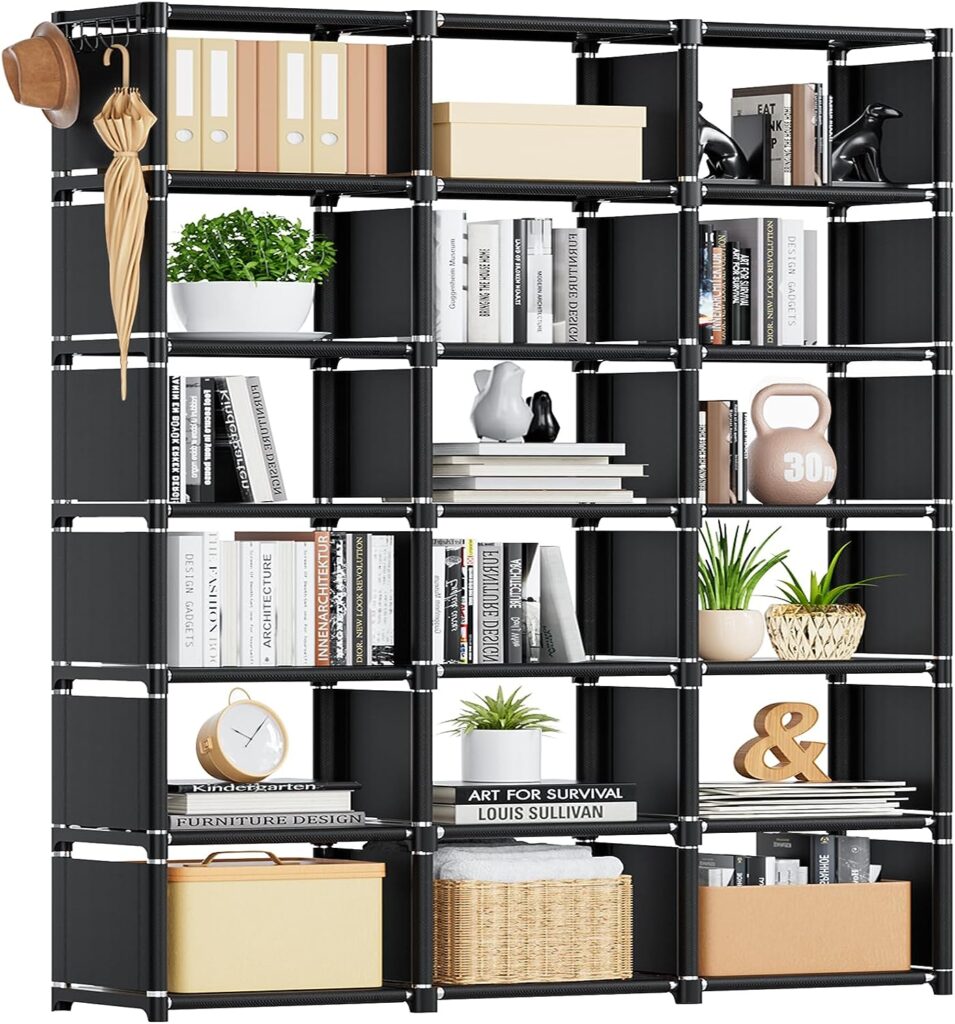
The first step in streamlining your collections is to assess what you have and determine which items truly bring you joy and value. Take a critical look at each piece in your collection and ask yourself whether it sparks joy, aligns with your current interests and lifestyle, and contributes positively to your space.
Be honest with yourself about which items no longer serve you or bring you joy. It’s okay to let go of items that no longer resonate with you or that no longer fit into your vision for your space. Remember, it’s not about the quantity of items you own, but the quality and significance of each piece.
Consider setting specific criteria for your collection to help guide your decision-making process. For example, you might decide to only keep items that are in excellent condition, that have sentimental value, or that align with a specific theme or aesthetic.
Once you’ve identified the gems in your collection, it’s time to curate them for maximum impact. Consider how you can display your treasures in a way that showcases their beauty and significance while also complementing your space.
Choose a focal point or central display area for your collection, such as a dedicated shelf, cabinet, or wall space. Arrange your items thoughtfully, considering factors like size, shape, color, and texture to create visual interest and harmony.
Don’t be afraid to get creative with your displays. Mix and match different items within your collection to create dynamic vignettes, and experiment with different arrangements until you find one that feels just right. Consider incorporating other elements like artwork, lighting, or decorative accents to enhance the overall aesthetic of your display.
Regularly review and update your collection to ensure that it remains curated and cohesive. As your tastes and interests evolve, be open to letting go of items that no longer align with your vision for your space and seek out new additions that bring you joy and inspiration.
By streamlining your collections and curating them with intention, you can transform your treasures into focal points of beauty and inspiration that enhance your space rather than overwhelming it. Say goodbye to cluttered collections and hello to a curated showcase of your passions and personality—a space that reflects who you are and brings you joy every time you walk through the door.
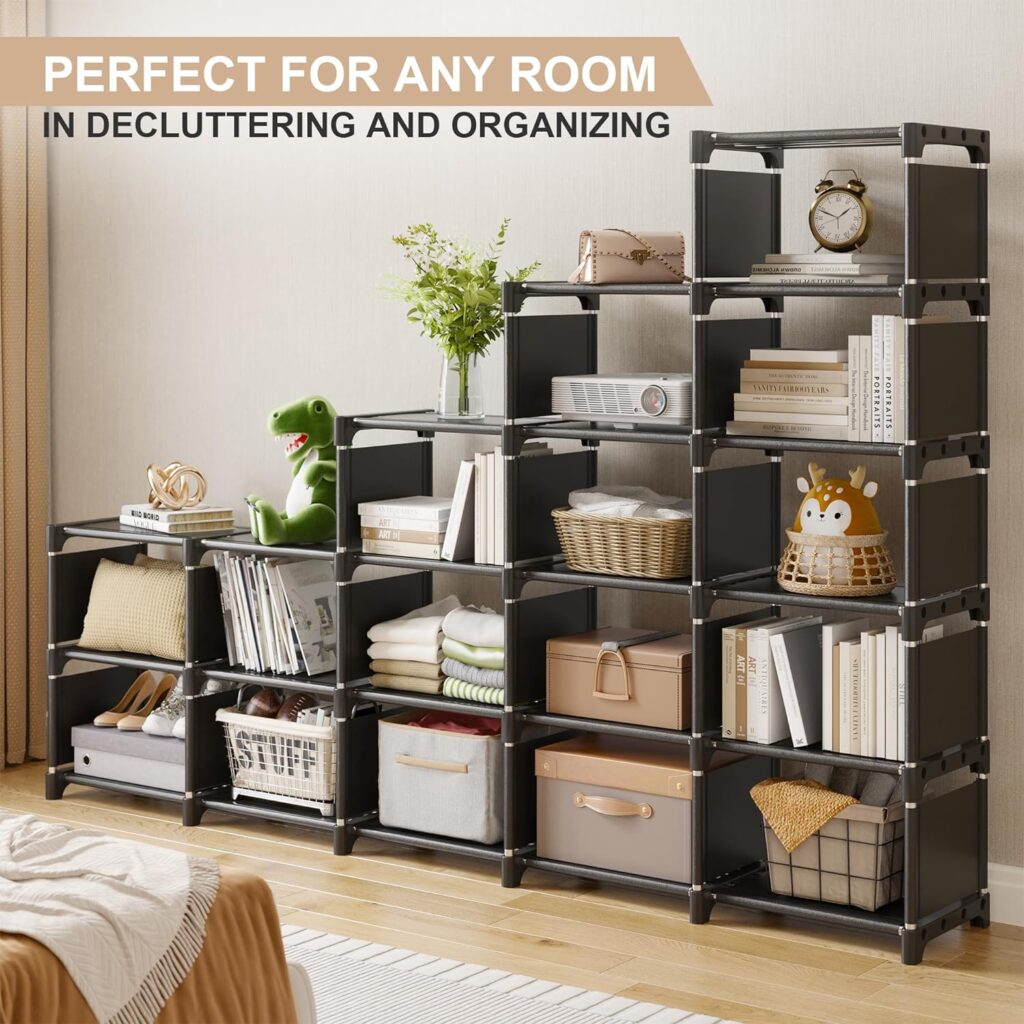
Storage spaces are a double-edged sword. While they provide valuable real estate for stashing away our belongings, they also tend to become black holes of clutter when overfilled. Overstuffing storage spaces not only diminishes their functionality but also makes it difficult to find and access items when needed. However, with mindful organization techniques and a commitment to finding balance, you can transform your storage spaces into efficient, organized sanctuaries that maximize space without sacrificing functionality.
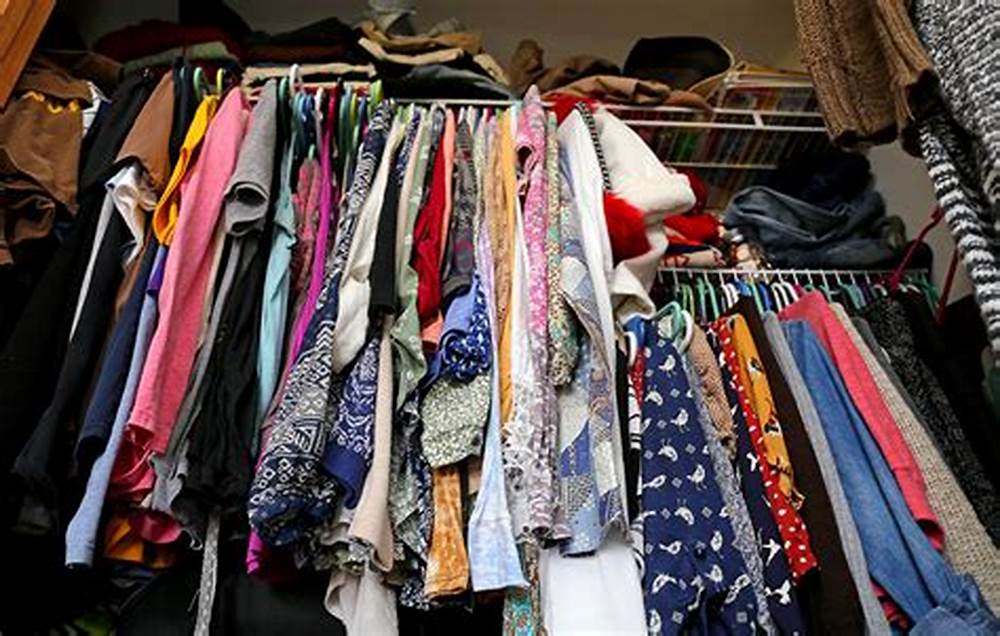
The first step in preventing storage spaces from becoming overstuffed is to assess your storage needs. Take inventory of the items you need to store and categorize them based on frequency of use, size, and type. This will help you determine the most appropriate storage solutions for your belongings and avoid cluttering your space with unnecessary items.
Consider the purpose of each storage area and how it can best serve your needs. For example, a pantry may need to accommodate a variety of food items, while a linen closet may be better suited for towels, bedding, and toiletries. Tailor your storage solutions to the specific needs of each space to maximize efficiency and functionality.
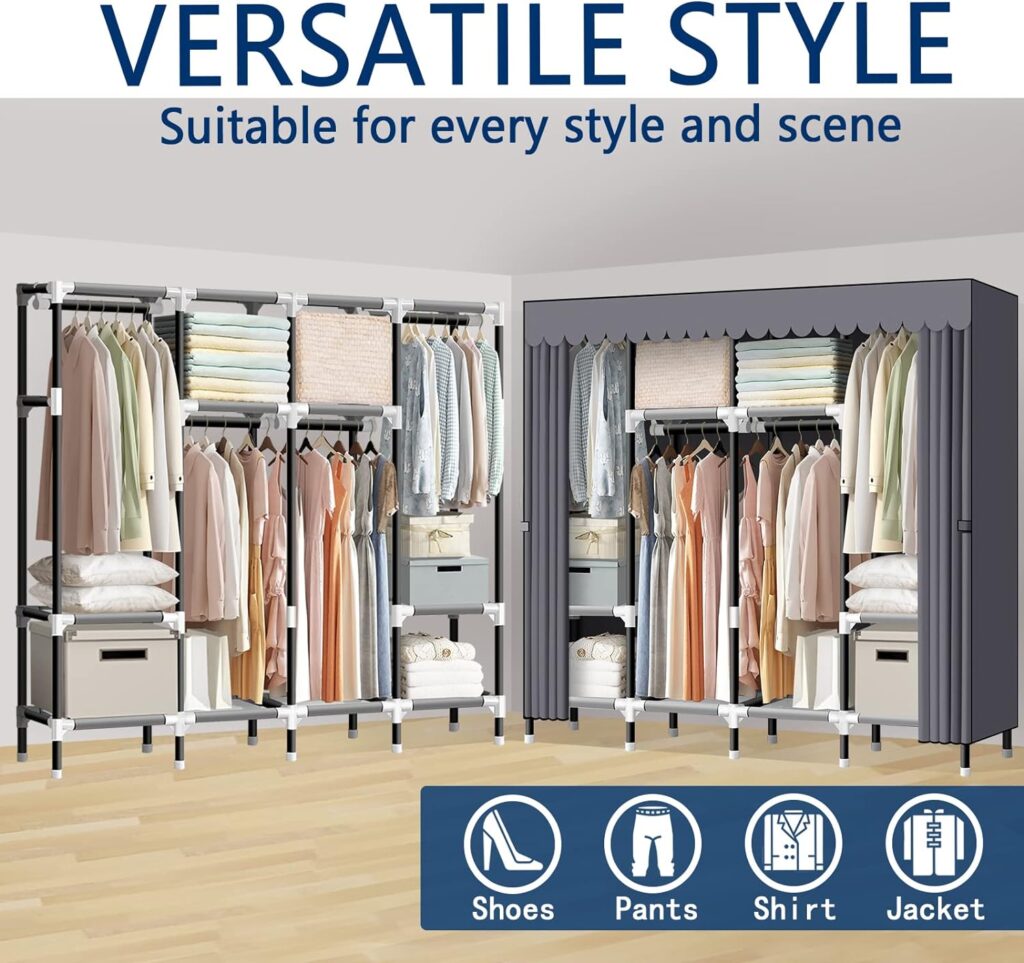
Once you’ve assessed your storage needs, it’s time to implement smart storage solutions that maximize space without overcrowding. Invest in storage solutions that make the most of vertical space, such as shelving units, stackable bins, and over-the-door organizers. This will help you maximize storage capacity while keeping items easily accessible.
Be strategic about how you organize and arrange items within your storage spaces. Group similar items together and store them in designated zones to streamline the organization process and make it easier to find what you need. Consider using clear containers or labels to further enhance visibility and accessibility.
Avoid the temptation to overfill storage spaces to the brim. Leave some breathing room between items to allow for easy access and prevent items from becoming disorganized or damaged. Be mindful of weight limits for shelves and storage bins to prevent accidents or damage to your belongings.
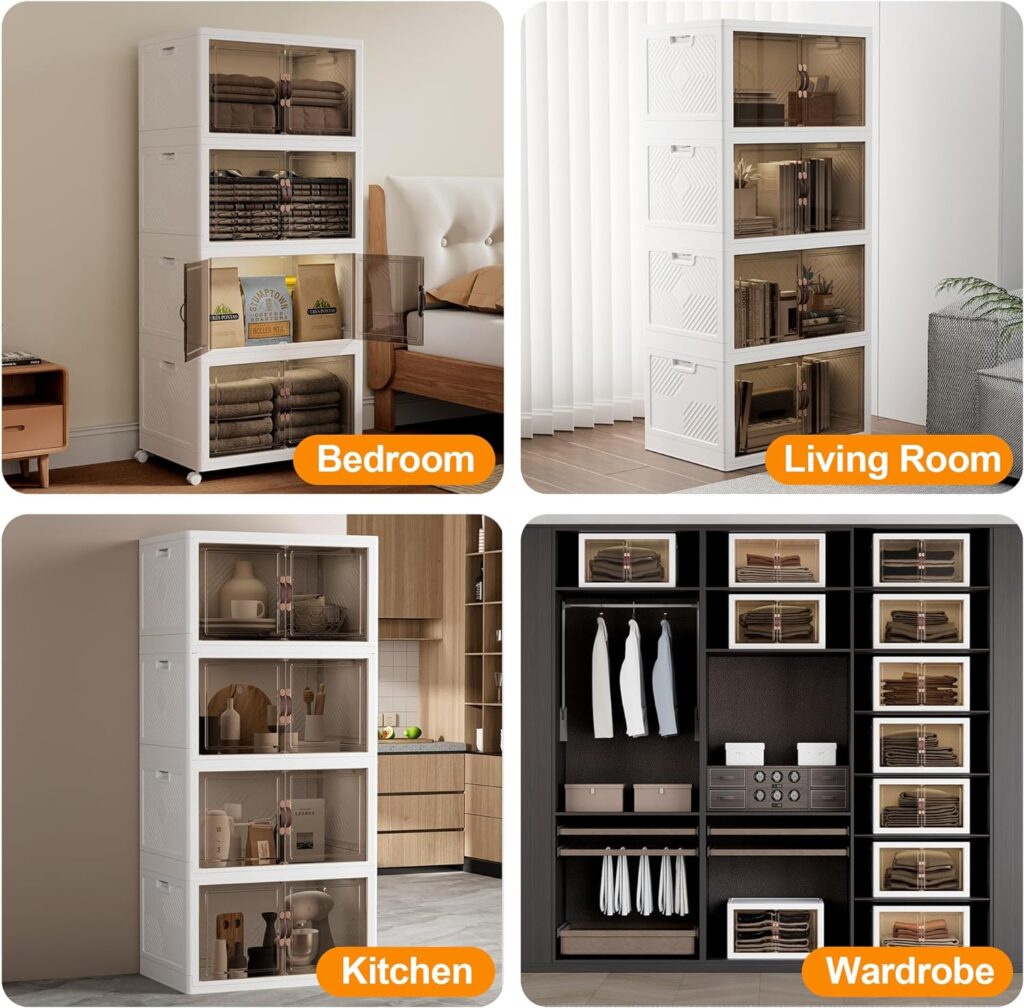
Finally, make regular maintenance and editing a priority to prevent storage spaces from becoming overstuffed over time. Set aside dedicated time each month to review and edit the contents of your storage spaces, purging items that are no longer needed or used. Be ruthless in your decluttering efforts and resist the urge to hold onto items out of guilt or sentimentality.
Regularly assess the effectiveness of your storage solutions and adjust as needed to accommodate changing needs and priorities. As your lifestyle evolves, so should your storage solutions to ensure that they continue to serve you effectively.
By implementing smart storage solutions, staying mindful of your storage needs, and making regular maintenance and editing a priority, you can prevent storage spaces from becoming overstuffed and create organized, efficient sanctuaries that maximize space without sacrificing functionality. Say goodbye to cluttered storage spaces and hello to streamlined, organized havens that bring peace and tranquility to your home.
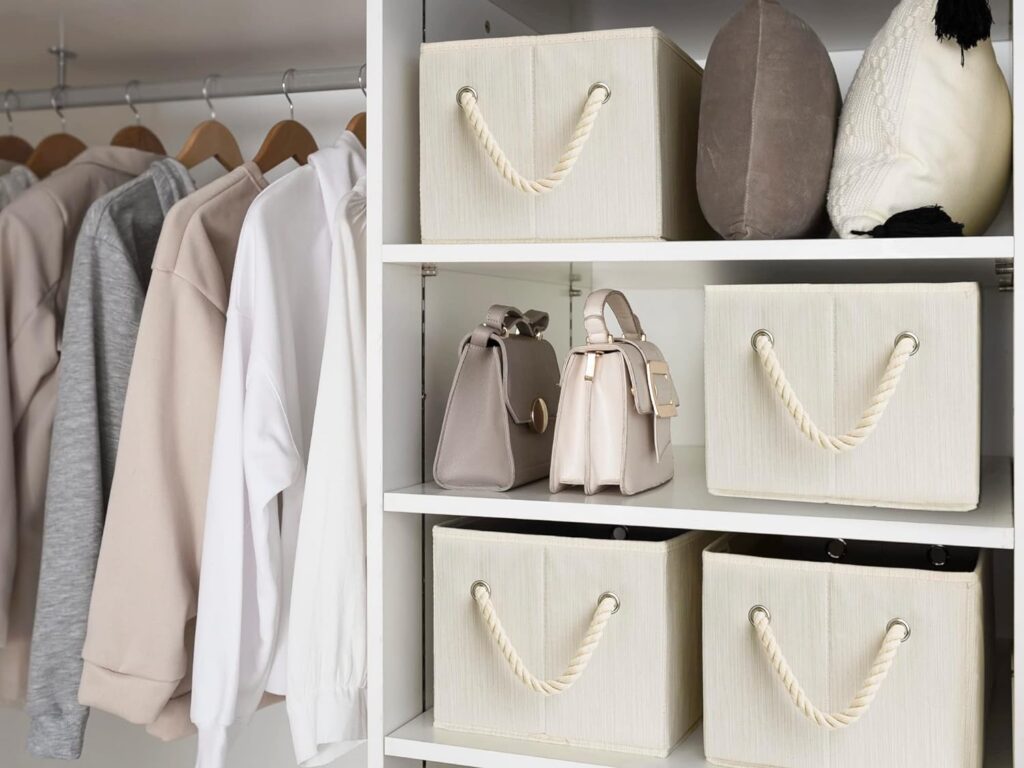
The “one-in-one-out” rule is a simple yet powerful principle that can help you maintain balance and prevent clutter from accumulating in your home. The concept is straightforward: for every new item you bring into your space, one existing item must be removed. By adhering to this rule, you ensure that your belongings remain in equilibrium, preventing your home from becoming overwhelmed with excess stuff. However, when this rule is disregarded, it becomes all too easy for clutter to spiral out of control, leading to disorganization, stress, and a sense of overwhelm. Let’s explore how embracing the one-in-one-out rule can help you maintain harmony in your home.
Maintain Balance

The first step in implementing the one-in-one-out rule is to adopt a mindset of conscious consumption. Before purchasing or acquiring a new item, take a moment to consider its value and necessity in your life. Ask yourself whether it truly serves a purpose or brings you joy, and whether you have space for it in your home. By being mindful about what you bring into your space, you can prevent clutter from accumulating unnecessarily and ensure that every item adds value to your life.
When tempted to make a new purchase, pause and assess whether you’re willing to part with an existing item to make room for it. Consider whether the new item will truly enhance your life or if it’s simply adding to the clutter. If you’re unable to identify an item to remove, it may be a sign that the new purchase isn’t necessary after all.
One In One Out Rule

In addition to being mindful of what you bring into your space, it’s important to regularly assess and edit your belongings to ensure that they remain in balance. Set aside dedicated time on a regular basis—whether it’s weekly, monthly, or seasonally—to review your possessions and identify items that are no longer needed or used.
When purging items from your home, consider their condition, usefulness, and relevance to your current lifestyle. Donate or sell items that are still in good condition but no longer serve you and recycle or dispose of items that are damaged or beyond repair. By letting go of items that no longer add value to your life, you create space for new opportunities and experiences to enter.
Ultimately, embracing the one-in-one-out rule is about cultivating intentionality and gratitude in your life. By being mindful of what you bring into your space and regularly purging items that no longer serve you, you create a home that is filled with purpose, joy, and abundance. Each item in your home has a place and a purpose, and by maintaining balance through the one-in-one-out rule, you ensure that your space remains a reflection of your values and priorities.
As you embrace the one-in-one-out rule, remember to approach decluttering with a spirit of gratitude and appreciation for the items you choose to keep. By focusing on the things that truly bring you joy and letting go of the rest, you create a home that is a sanctuary of peace, tranquility, and harmony—a space where you can thrive and flourish in every aspect of your life.
Entertainment areas, whether they be living rooms, media rooms, or home theaters, serve as the heart of our homes—a place where we gather with loved ones to relax, unwind, and enjoy moments of leisure. However, when these spaces are disorganized, cluttered, or lacking in functionality, they can become sources of stress rather than sanctuary. By addressing disorganization in your entertainment areas and implementing thoughtful design and organization strategies, you can transform chaos into cozy retreats that invite relaxation, connection, and joy into your home.
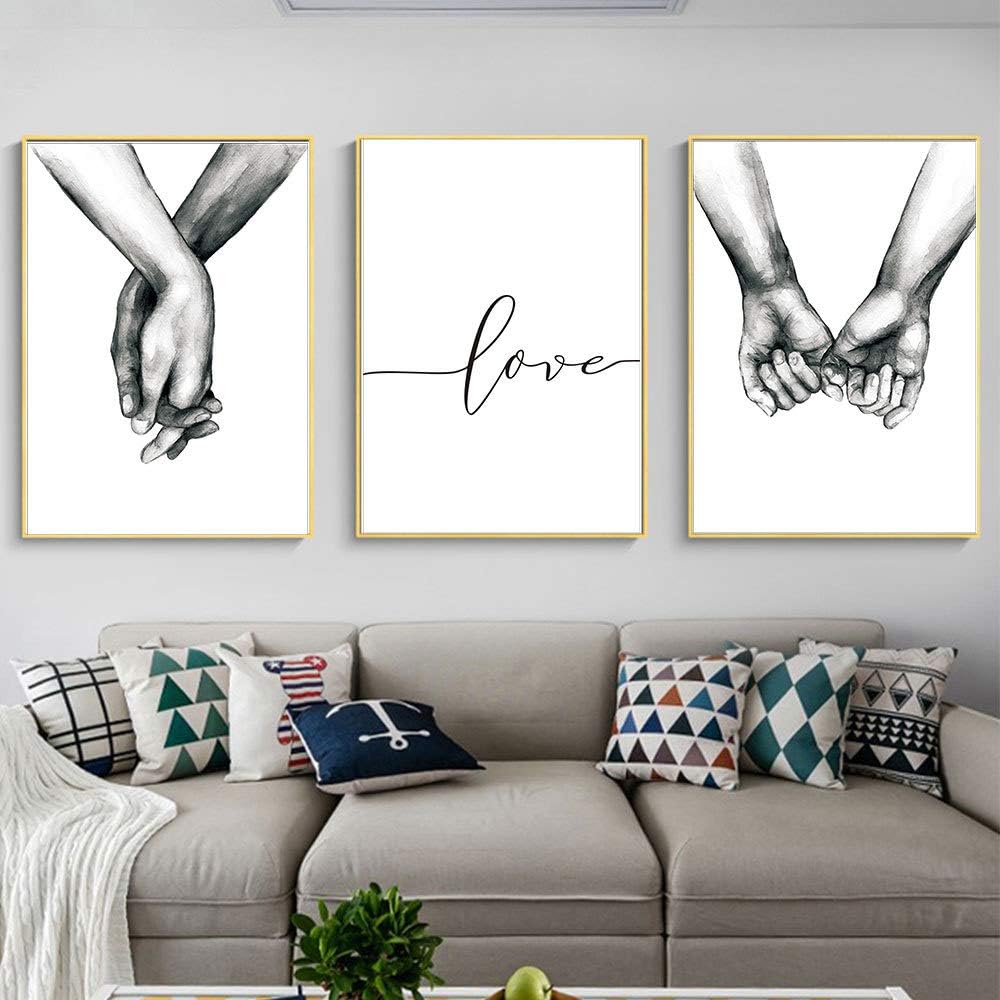
Entertainment areas play a crucial role in our daily lives, serving as multifunctional spaces for relaxation, socializing, and recreation. When these spaces are disorganized or cluttered, it can hinder our ability to fully enjoy and appreciate them, leading to feelings of overwhelm and dissatisfaction.
Consider the impact of a well-organized and thoughtfully designed entertainment area on your overall well-being and quality of life. When these spaces are organized and clutter-free, they become inviting and welcoming environments that encourage relaxation, connection, and creativity.
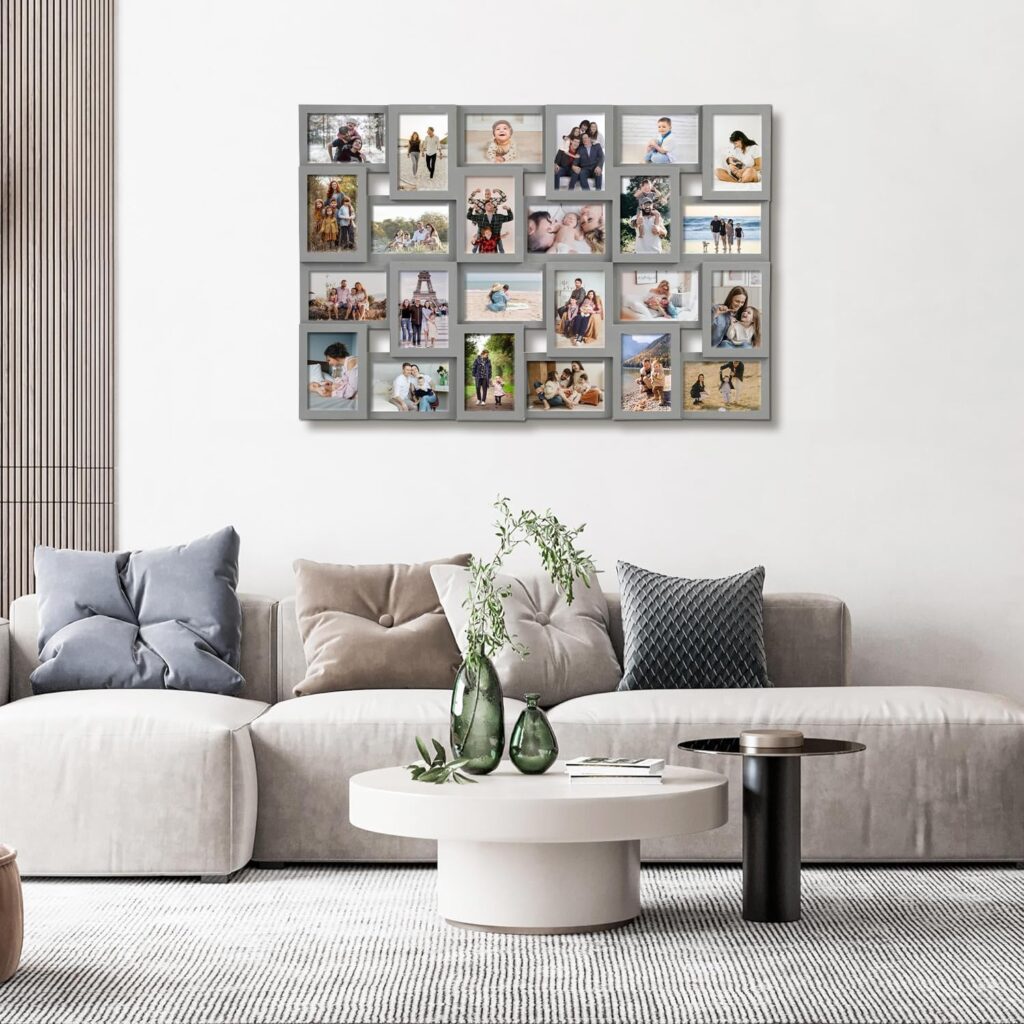
To combat disorganization in your entertainment areas, it’s important to implement effective organization strategies that support your lifestyle and design preferences. Start by decluttering your space and removing any unnecessary items or distractions that detract from its functionality and aesthetics.
Invest in storage solutions and furniture that maximize space and minimize clutter, such as media consoles with built-in storage, ottomans with hidden compartments, and shelving units with adjustable shelves. Create designated zones for different activities, such as watching TV, reading, and gaming, to streamline your workflow and make it easier to find what you need when you need it.
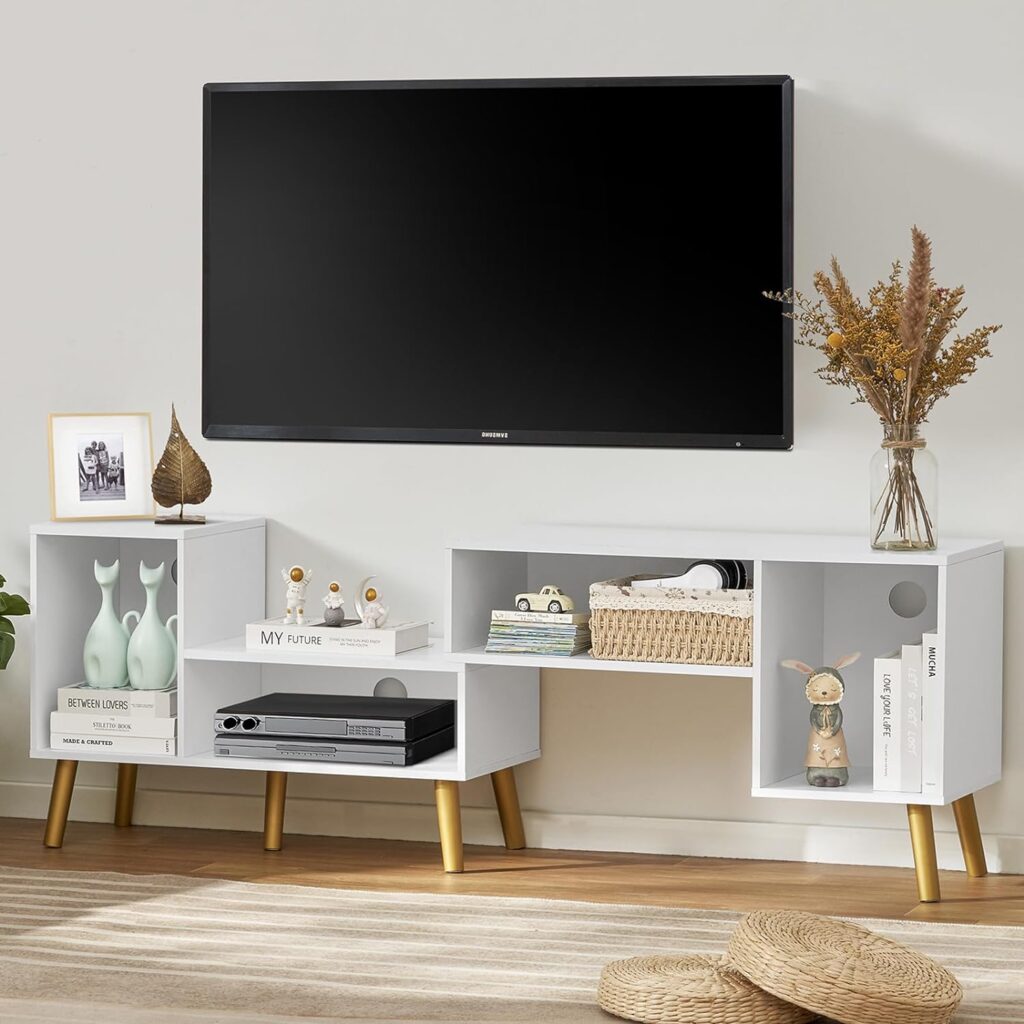
Consider the layout and flow of your entertainment area and adjust as needed to optimize functionality and comfort. Arrange furniture in a way that encourages conversation and interaction, and incorporate elements of comfort, such as cozy seating, soft lighting, and plush rugs, to create a warm and inviting atmosphere.
In addition to physical organization, it’s important to cultivate a relaxing and enjoyable atmosphere in your entertainment areas by adding personal touches and finishing touches that reflect your personality and interests. Consider incorporating elements of your hobbies, interests, and passions into your decor, such as artwork, collectibles, and memorabilia, to create a space that feels uniquely yours.
Create cozy and inviting seating areas where you can relax and unwind with loved ones, incorporating comfortable furniture, soft blankets, and throw pillows to enhance comfort and coziness. Add ambient lighting, such as table lamps, floor lamps, and string lights, to create a warm and inviting atmosphere that’s conducive to relaxation and enjoyment.
By addressing disorganization in your entertainment areas and implementing thoughtful design and organization strategies, you can transform chaos into cozy retreats that invite relaxation, connection, and joy into your home. Say goodbye to clutter and hello to entertainment areas that are as functional as they are stylish, providing a sanctuary of comfort and enjoyment for you and your loved ones.
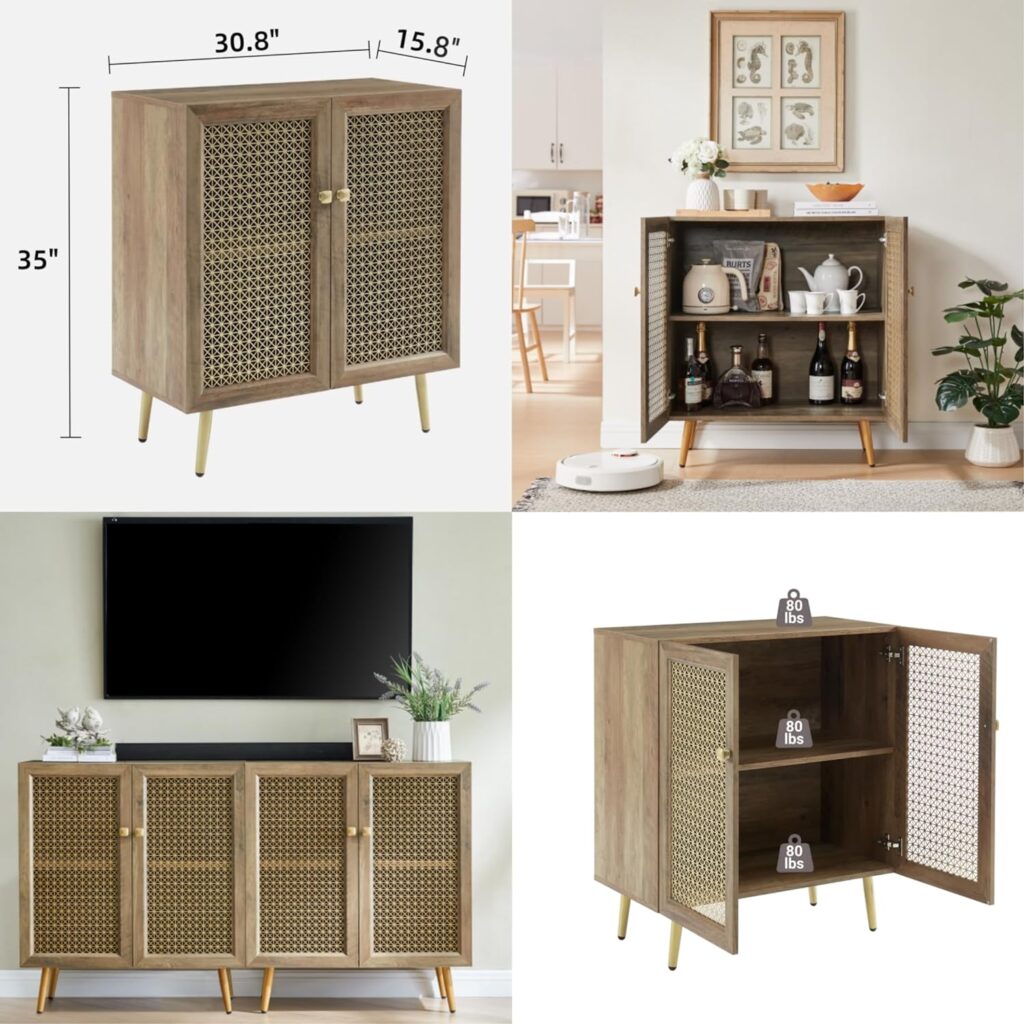
In our quest for organization, it’s easy to fall into the trap of overcomplication. We invest in elaborate storage solutions, adopt complex organizational methods, and accumulate countless bins, baskets, and labels to tame the chaos of our cluttered lives. However, in our pursuit of perfection, we often overlook the beauty of simplicity and inadvertently create more stress and confusion in the process. By stepping back and simplifying our organization systems, we can create sustainable solutions that promote order, efficiency, and peace of mind in our homes.
Overcomplicated organization systems can lead to a variety of pitfalls, including increased stress, decision fatigue, and a sense of overwhelm. When our systems are overly complex, it becomes difficult to maintain them consistently, leading to frustration and ultimately, abandonment.
Consider the impact of overcomplication on your daily life and well-being. Are you spending more time managing your organization systems than enjoying the benefits of a tidy and clutter-free home? Are you constantly searching for the perfect organizational solution, only to feel disappointed when it fails to live up to your expectations?
To combat overcomplication in our organization systems, it’s important to embrace the beauty of simplicity and streamline our approach to organization. Start by decluttering your space and removing any unnecessary items or distractions that complicate your organization efforts.
Simplify your storage solutions by focusing on functionality and practicality rather than aesthetics or complexity. Invest in versatile storage containers that serve multiple purposes and can adapt to changing needs over time. Instead of relying on elaborate labeling systems, opt for clear containers and transparent bins that allow you to easily see what’s inside.
Consider adopting minimalist organizational methods, such as the KonMari method or the one-touch rule, that prioritize simplicity and efficiency. These methods encourage you to focus on what truly matters and let go of anything that no longer serves a purpose or brings you joy.
KonMari Method

In addition to simplifying our organization systems, it’s important to cultivate a mindful approach to organization that promotes balance and harmony in our lives. Take a step back and assess your organization systems with a critical eye, identifying areas where you can simplify and streamline.
Focus on creating systems that are easy to maintain and integrate seamlessly into your daily routines. Instead of striving for perfection, aim for progress and improvement over time. Celebrate small victories and learn from setbacks, adjusting your approach as needed to find what works best for you and your unique circumstances.
By simplifying our organization systems and adopting a mindful approach to organization, we can create sustainable solutions that promote order, efficiency, and peace of mind in our homes. Say goodbye to overcomplication and hello to simplicity, clarity, and sustainable order that stands the test of time.
In the pursuit of an organized and harmonious home, it’s easy to fall into the trap of complacency. We implement organization systems, establish routines, and declutter our spaces, believing that once achieved, order will be effortlessly maintained. However, the reality is that our lives are dynamic and ever-changing, and what works for us today may not necessarily work tomorrow. By neglecting regular evaluation and adjustment of our organization systems, we risk stagnation, inefficiency, and a gradual return to chaos. To sustain success and maintain a sense of order in our homes, it’s essential to embrace the practice of continuous improvement through regular evaluation and adjustment.
Regular evaluation of our organization systems involves stepping back and assessing their effectiveness, identifying areas for improvement, and making necessary adjustments to better align with our evolving needs and circumstances.
Consider the changes that occur in your life over time, such as changes in family dynamics, work commitments, hobbies, and interests. These changes can impact the way we use and interact with our living spaces, requiring us to adapt our organization systems accordingly.
To embrace the practice of continuous improvement, it’s important to cultivate flexibility and adaptability in our approach to organization. Instead of viewing organization as a one-time event, we should see it as an ongoing process that requires regular attention and adjustment.
Schedule regular evaluation sessions to assess the effectiveness of your organization systems and identify areas for improvement. During these sessions, ask yourself whether your systems are still meeting your needs, if there are any pain points or inefficiencies that need to be addressed, and if there are any new challenges or priorities that require attention.
Be open to feedback and willing to experiment with new ideas and approaches to organization. Don’t be afraid to let go of systems or methods that no longer serve you and embrace change as an opportunity for growth and improvement.
In addition to regular evaluation and adjustment, it’s important to implement sustainable practices that promote long-term success and maintainability. Focus on creating organization systems that are simple, intuitive, and easy to maintain, avoiding unnecessary complexity or over-engineering.
Involve household members or roommates in the evaluation and adjustment process, soliciting their input and feedback to ensure that organization systems reflect the needs and preferences of everyone in the home.
By embracing the practice of continuous improvement through regular evaluation and adjustment, we can sustain success and maintain a sense of order in our homes. Say goodbye to complacency and hello to a home that evolves and adapts with you, providing a sanctuary of comfort, efficiency, and harmony for years to come.
Consistency is the cornerstone of successful organization. Without it, even the most well-intentioned efforts to declutter and organize can quickly unravel, leaving us feeling overwhelmed and frustrated. Yet, maintaining consistency in our organizing habits is often easier said than done. Life gets busy, priorities shift, and old habits die hard, making it challenging to stick to a regular routine. However, by cultivating consistent organizing habits, we can create a foundation for lasting order and harmony in our homes.
Consistency in organizing habits provides stability in an ever-changing world. It creates a sense of predictability and routine, allowing us to maintain order and control over our living spaces even when other aspects of our lives may feel chaotic or uncertain.
Consider the impact of consistent organizing habits on your daily life. When you have established routines for decluttering, tidying up, and maintaining order, you’re better equipped to handle unexpected challenges and disruptions with grace and ease.
To cultivate consistency in your organizing habits, it’s important to establish routines that align with your lifestyle and priorities. Start by identifying specific organizing tasks that need to be done regularly, such as decluttering surfaces, sorting mail, and tidying up common areas.
Break down these tasks into smaller, more manageable steps and schedule them into your daily or weekly routine. Set aside dedicated time each day or week to focus on organizing, making it a non-negotiable part of your schedule.
Incorporate organizing habits into existing routines and rituals to make them easier to stick to. For example, you could make it a habit to declutter your kitchen counters while waiting for your morning coffee to brew or tidy up your living room before settling in for the evening.
Consistency in organizing habits requires perseverance and determination, especially when faced with obstacles and setbacks. It’s important to stay motivated and committed to your organizing goals, even when it feels challenging.
Identify potential obstacles that may hinder your consistency, such as lack of time, motivation, or energy, and develop strategies for overcoming them. Break tasks down into smaller, more manageable steps, enlist the help of family members or roommates, and reward yourself for staying on track.
Experiment with different organizing methods and techniques to find what works best for you. Not every approach will resonate with everyone, so it’s important to find strategies that align with your personality, preferences, and lifestyle.
By cultivating consistency in your organizing habits, you can create a foundation for lasting order and harmony in your home. Say goodbye to chaos and hello to a home that feels calm, comfortable, and clutter-free, providing a sanctuary of peace and tranquility in an otherwise busy world.
Feng Shui, an ancient Chinese practice, offers a holistic approach to creating harmony and balance in our living spaces. Disregarding its principles can result in a missed opportunity to optimize the flow of energy, or qi, within our homes, potentially leading to feelings of imbalance, stagnation, or discord. By embracing Feng Shui principles, we can harness the energy of our surroundings to cultivate a space that promotes well-being, prosperity, and positive relationships.
Feng Shui is based on the belief that the arrangement of our surroundings influences the flow of energy, or qi, in our lives. By aligning our living spaces with the principles of Feng Shui, we can create environments that support and nourish us on physical, emotional, and spiritual levels.
Consider the key principles of Feng Shui, such as the importance of clutter-free spaces, the balance of yin and yang energies, and the use of the Bagua map to identify areas of our home that correspond to different aspects of our lives. By understanding and applying these principles, we can create a harmonious environment that enhances our well-being and promotes positive energy flow.
To incorporate Feng Shui principles into your home design, start by decluttering your space and removing any obstacles or barriers that obstruct the flow of energy. Clearing clutter allows qi to flow freely throughout your home, creating a sense of spaciousness and vitality.
Use the Bagua map to identify areas of your home that correspond to different aspects of your life, such as wealth, health, relationships, and creativity. Enhance these areas with symbols, colors, and elements that promote positive energy flow and support your intentions and goals.
Pay attention to the placement of furniture, decor, and other objects within your home, ensuring that they are arranged in a way that promotes balance and harmony. Avoid placing furniture in direct alignment with doors or windows, as this can disrupt the flow of energy and create feelings of unease or discomfort.
By embracing Feng Shui principles, we can cultivate environments that nurture and inspire us, promoting well-being, prosperity, and positive relationships. When our living spaces are aligned with the principles of Feng Shui, we feel more connected to our surroundings and experience greater harmony and balance in our lives.
Consider the impact of Feng Shui on your daily life and well-being. When your home is in harmony with its surroundings, you may notice improvements in your health, relationships, and overall sense of happiness and fulfillment.
By incorporating Feng Shui principles into your home design and embracing its benefits, you can create a space that supports and nourishes you on every level. Say goodbye to discord and hello to a home that radiates with positive energy, providing a sanctuary of peace, prosperity, and well-being for you and your loved ones.
Feng Shui Principles incorporated into the bedroom design
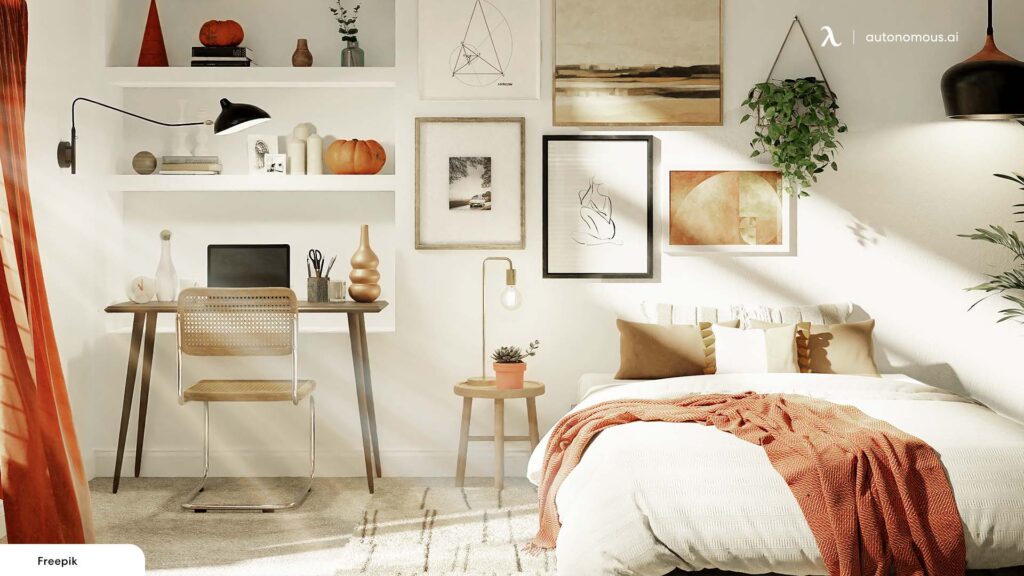
In the journey towards a well-organized and harmonious home, it’s essential to recognize when we need assistance. Yet, many of us hesitate to seek help, whether due to pride, perfectionism, or a belief that we should be able to handle everything on our own. However, navigating the complexities of home organization often requires expertise, guidance, and support from others. By embracing help when needed, we can access valuable resources, insights, and solutions that empower us to create sustainable organization systems and transform our living spaces.
Seeking help when needed allows us to leverage the expertise and experience of others to overcome challenges and achieve our goals. Whether it’s enlisting the help of a professional organizer, consulting with a Feng Shui expert, or reaching out to friends and family for support, seeking help opens doors to new perspectives, ideas, and solutions that we may not have considered on our own.
Consider the benefits of seeking help in your organization journey. Professional organizers can offer personalized guidance and strategies tailored to your specific needs and circumstances, while Feng Shui experts can provide insights into the energetic flow of your home and suggest adjustments to enhance harmony and balance.
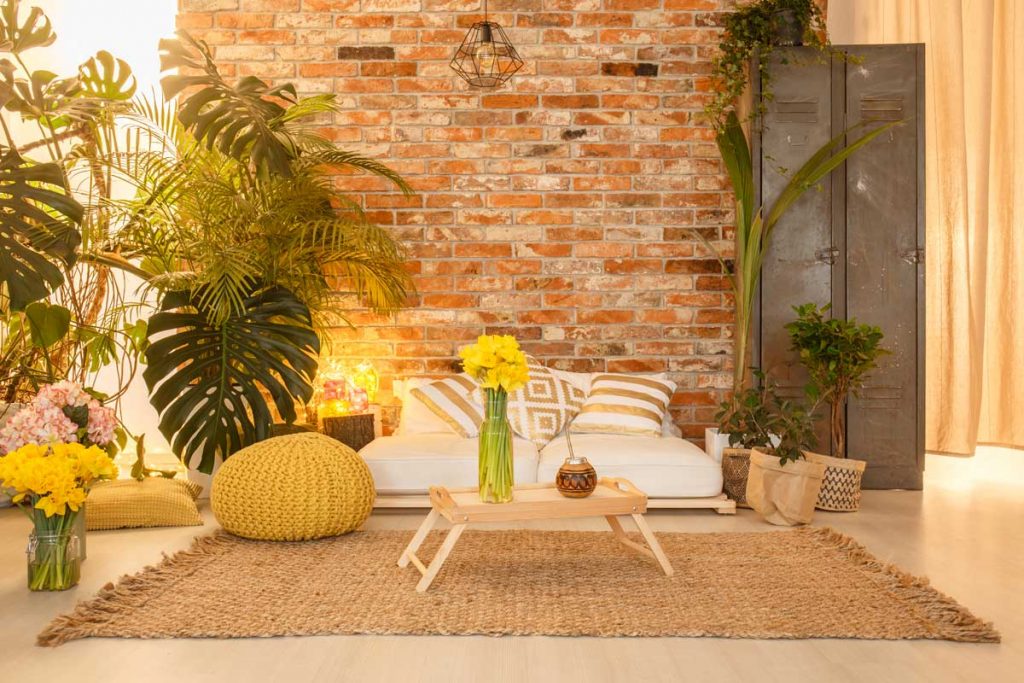
b). Overcoming Barriers to Seeking Help: Cultivating Vulnerability and Openness
Despite the benefits of seeking help, many of us face internal barriers that prevent us from reaching out. These barriers may include fear of judgment, reluctance to admit vulnerability, or a sense of shame or inadequacy. However, by cultivating vulnerability and openness, we can overcome these barriers and embrace the support and assistance that others have to offer.
Acknowledge that it’s okay to ask for help and that doing so doesn’t diminish your abilities or worth. Recognize that seeking help is a sign of strength, not weakness, and that by reaching out, you’re taking proactive steps towards creating positive change in your life.
Building a support network is essential for success in any endeavor, including home organization. Surround yourself with people who support and encourage your goals, whether it’s friends, family members, or professionals in the field. Lean on your support network for guidance, encouragement, and accountability as you navigate the challenges of home organization.
Consider joining online communities or support groups dedicated to home organization, where you can connect with like-minded individuals, share tips and strategies, and receive support and encouragement along the way. Attend workshops, seminars, or classes on organization to expand your knowledge and skills and connect with experts in the field.
By embracing help when needed, we can access valuable resources, insights, and solutions that empower us to create sustainable organization systems and transform our living spaces. Say goodbye to struggling alone and hello to a supportive network of allies who are invested in your success and well-being.
The path to home harmony is not a destination but a journey—a journey filled with twists and turns, challenges and triumphs, setbacks and breakthroughs. It’s a journey that requires patience, persistence, and a willingness to embrace change. As we navigate the complexities of home organization, let us remember that perfection is not the goal. Instead, let us strive for progress, not perfection, and approach the process with an open heart and mind.
Embracing the journey to home harmony requires us to cultivate self-awareness, flexibility, and resilience. It’s about recognizing our strengths and limitations, acknowledging when we need help, and staying committed to our goals even when the going gets tough. It’s about letting go of perfectionism and embracing imperfection, knowing that our homes reflect our lives – messy, imperfect, but full of love, laughter, and memories.
Along the way, we may encounter obstacles and challenges that test our resolve. We may face moments of doubt or frustration, wondering if our efforts are worth it. But it’s during these moments that we must remind ourselves of the bigger picture—the vision of a home that is not just organized but truly harmonious, a sanctuary of comfort, joy, and inspiration for ourselves and our loved ones.
As we journey towards home harmony, let us celebrate the progress we’ve made and the lessons we’ve learned along the way. Let us be gentle with ourselves and others, knowing that change takes time and that setbacks are a natural part of the process. Let us embrace the journey with curiosity and enthusiasm, eager to discover what lies around the next corner and ready to welcome the transformation that awaits.
Ultimately, the journey to home harmony is not just about creating an organized living space; it’s about creating a life that is aligned with our values, aspirations, and dreams. It’s about reclaiming control over our environment and our lives, freeing ourselves from the burden of clutter and chaos, and creating space for the things that truly matter. So let us embrace the journey with open arms and open hearts, knowing that the path to home harmony is not always easy but that the rewards are well worth the effort.
1. How do I know if my home needs better organization?
2. Where do I start with home organization?
3. How can I maintain the organization in the long term?
4. What should I do if I feel overwhelmed by the organization process?
5. How can I incorporate Feng Shui principles into my home?
6. What should I do if I struggle to let go of sentimental items?
7. Is professional help necessary for home organization?
Disclaimer: Some of the links on this website may be affiliate links, which means we may earn a commission if you click on the link and make a purchase.









